There is always something special about an architect’s home club. Think MacKenzie at Pasatiempo or Macdonald at National Golf Links. Perhaps it’s a function of the extra time they can spend on refinements, or of the freedom to take creative risks because they will be there to undo the flops. Maybe the familiarity with the land and course breeds a greater attention to the important details that separate good courses from great ones. Whatever the reasons, home courses tend to have a special quality.
For Donald Ross, No. 2 at Pinehurst fits this bill. It is his masterwork, and the love in his labors is evident. No. 2 debuted in 1907 as Ross’s star was very much on the rise, and he continued to tinker with it for decades. Pinehurst was Ross’s winter home, but he also had a northern home course. In the summers during this period, he migrated to Massachusetts, making a name for himself first at Oakley Country Club in Boston and then at Essex County Club in Manchester-by-the-Sea. In 1908, Ross signed on to redesign Essex County, a process that took ten years to complete. In 1909 he made the jump from Oakley to Essex, becoming the head professional and living with his family in a house adjacent to the 15th tee.
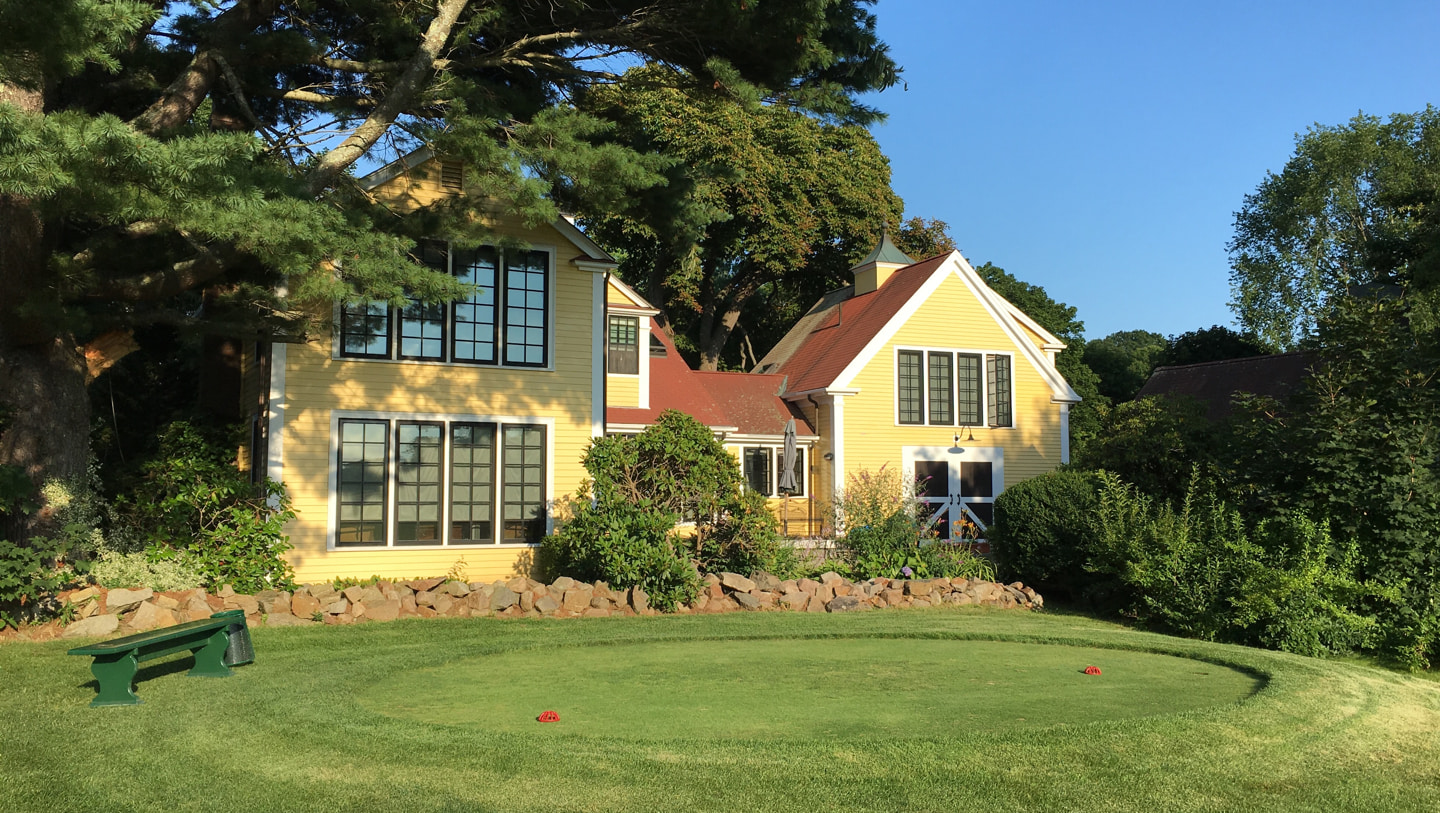
The Ross family home, off the 15th tee
For more than three seasons, Donald Ross walked across the course every day to the clubhouse to attend to his duties as pro, becoming intimately familiar with the land on which his redesign work was progressing steadily. This was no minor tune-up of the existing course. With the exception of the current 3rd green, Ross overhauled the routing, the greens, the fairway contours and the hazards. Trees were cleared as needed, and stone was dynamited. In his book Discovering Donald Ross, Brad Klein shares an excerpt from a field report filed by London Evening News reporter Henry Leach. Leach’s reporting provides a clue to the secret of Ross’s success in remaking his northern home course:
“The truth is that golf at Essex, as elsewhere in the country, is undergoing a great and wonderful transformation, regardless of cost, regardless of the magnitude and seeming impossibilities of the task, regardless of everything, but caused by the insatiable desire of the American golfer to have courses as good as they can be. To satisfy this desire (Ross) is everywhere pulling Nature to pieces and reconstructing her, doing his work most deftly and skillfully, and with a fine eye for pleasing effect. At the finish you might think that save for the putting greens and bunkers, it was all the simple work of nature herself in her gentler moods, smooth swards for rocks, and chaste glades where forest were…”
Donald Ross was not afraid to paint with broad strokes when building Essex County, such as at the bold 11th green, the rollercoaster routing of the 17th and 18th, or the field of sizable hazards between the 1st and 3rd. But he also attended to the finer details. The interior contours of the greens are not wild, and yet no single green could be considered bland. Dips and spines cut across the putting surfaces. When combined with cant and crowning, the first play is often an exercise in misreading putts. These are greens that it takes a lifetime to truly master. The green surrounds are highly varied with bunkers and mounding, but also include subtle runoffs and troughs such as the one off the back left of the 16th. Ross’s features confound the player who is not paying as close attention to the details as the man who created them.
By the time Donald Ross moved on from his work at Essex County to attend to his growing architecture business full time, he left behind a course on Boston’s North Shore worthy of being of being discussed alongside its more famed cousin in the Carolina Sandhills.
Restoring Ross
As was the case with so many Golden Age courses, Essex County fell prey to the aesthetic and maintenance trends that have come to characterize the post-WWII period. Most notably, tree planting and overgrowth resulted in the loss of much of the character that Donald Ross worked so hard to infuse into the course. Both figuratively and literally, the details of his his design had become overshadowed.
Tom Doak, Bruce Hepner and the Renaissance Golf team began working with Essex in 2000 on a master plan intended to restore the course to its former status among America’s best. There were broad strokes involved in their work. A lawsuit with a neighbor necessitated the repositioning of the par-3 14th hole away from Forest Street, which borders the property. And of course, there was the looming issue of the trees. A small group of passionate members, including the President and Green Chairman, put on their armor and gave the go ahead for the removals to begin. Thinning the forest was not popular with all of the members, however. Arrows flew at the leadership as the chainsaws hummed, but they persevered, channeling Ross’s spirit:
“As beautiful as trees are, and as fond as you and I are of them, we still must not lose sight of the fact that there is a limited place for them in golf. We must not allow our sentiments to crowd out the real intent of a golf course, that of providing fair playing conditions. If it in any way interferes with a properly played stroke, I think the tree is an unfair hazard and should not be allowed to stand.” – Donald Ross
More subtle work was also undertaken as the layers were peeled back and Ross’s brilliance began to show through. Greens and bunkers were expanded back to their original shapes, grass lines were fine tuned, and hummocks were given texture with fine fescue. The course has a rugged elegance to it, and the more the membership saw how unique their course was, enthusiasm for the work grew. Improved turf quality and wider corridors meant more forgiveness. At the same time, the strategic dimension Ross envisioned was reintroduced, giving better players additional challenges to overcome.
The momentum of the early days of the restoration continues under the stewardship of all-star Superintendent Eric Richardson. Bruce Hepner provides consultation to the club, and Richardson pushes forward, attending to both the broad strokes and fine details. Impactful projects have been undertaken, such as the addition of new tees on the 5th and 16th that add strategy and drama to a round at Essex. But what is really awe-inspiring about recent years is the tree work. The removals at Essex County now total well in excess of 15,000 and Richardson is relentlessly working to uncover the stone hill that gives the course so much of its character.
The 10th fairway in 2015 and after tree work in 2016
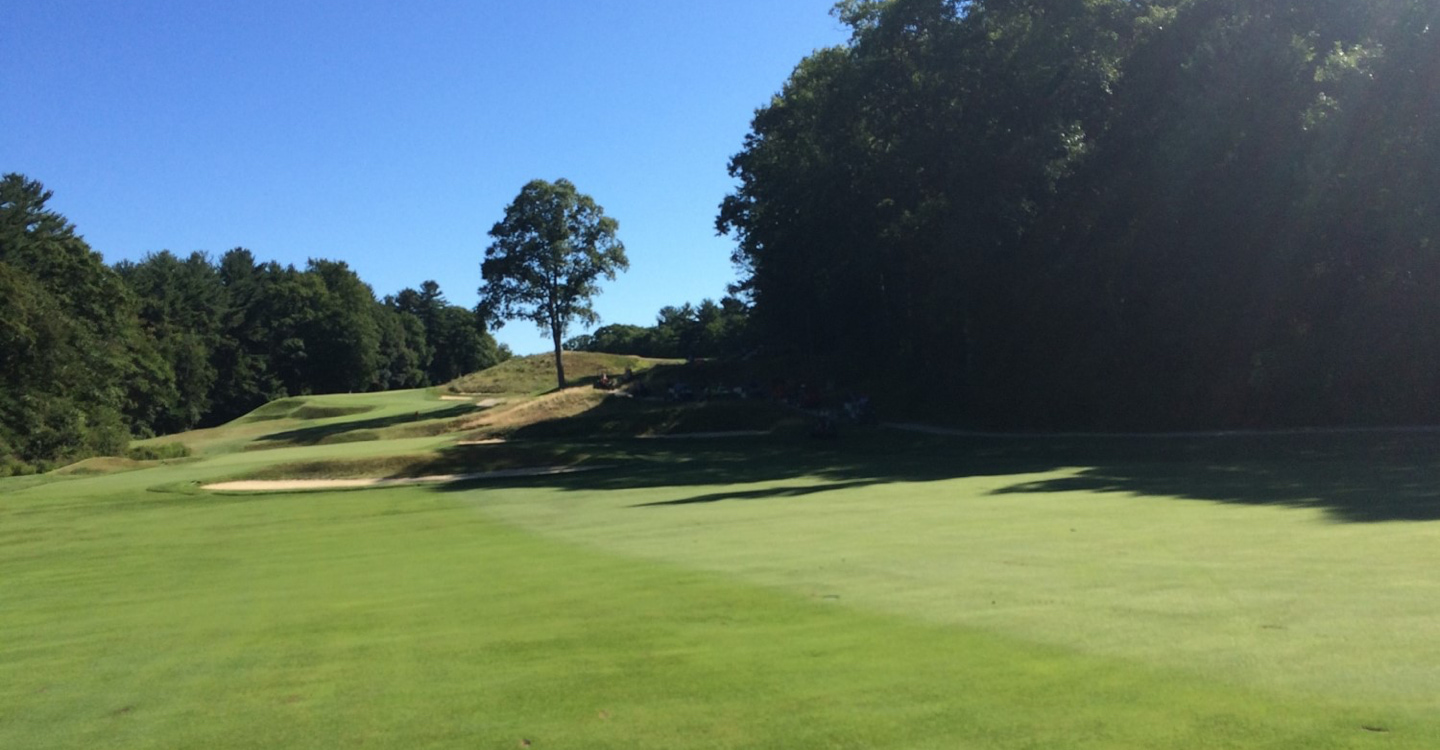
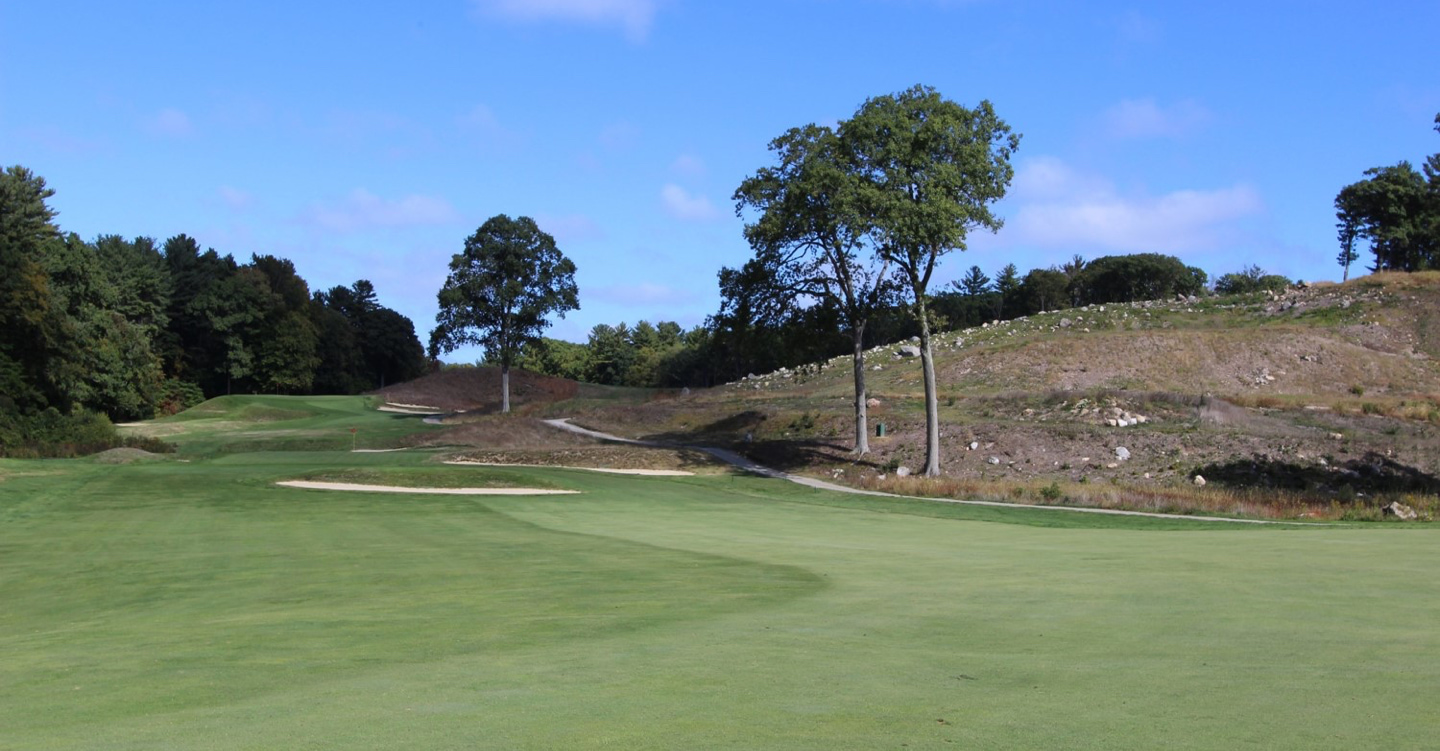
From the tee on the 11th in 2007 and after tree clearing behind the green in 2015
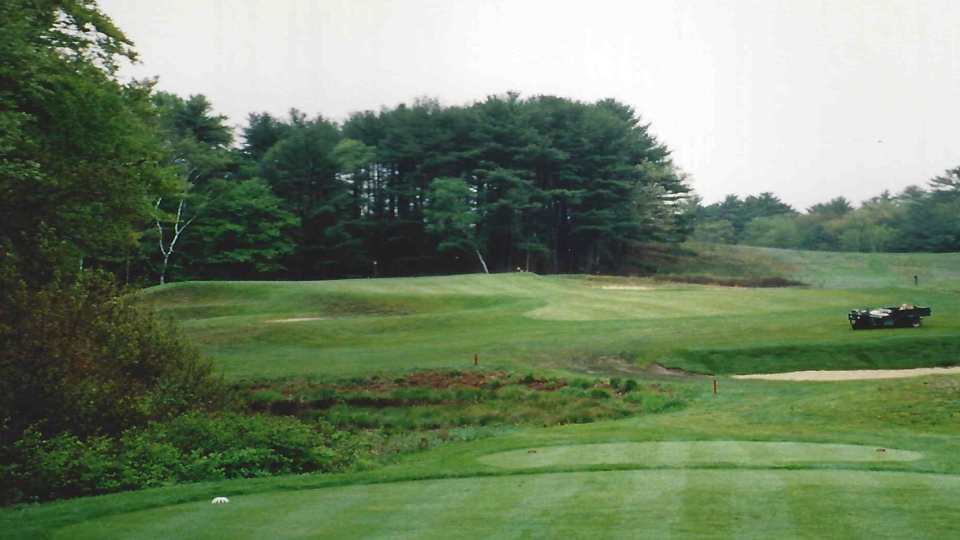
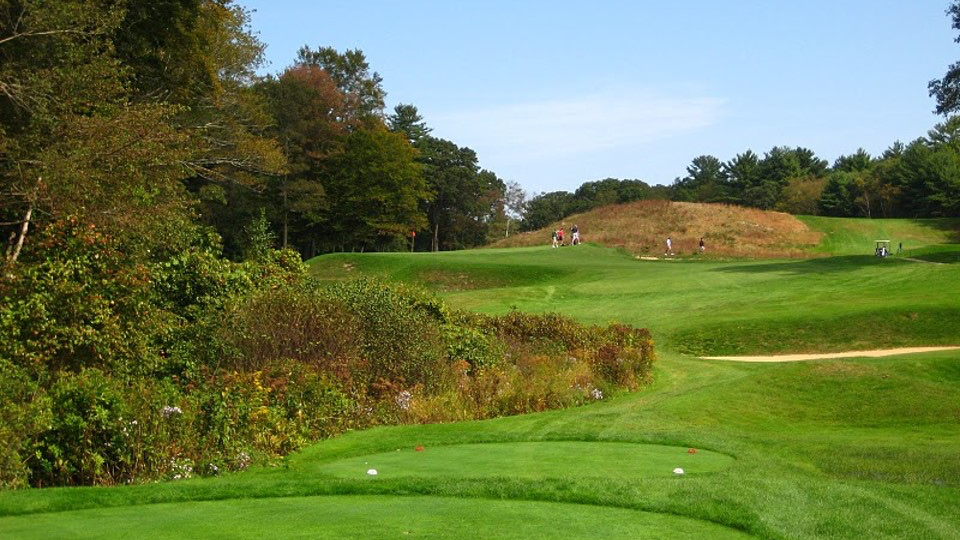
From the hill on the 12th back toward the 11th in 2015 and after tree work in 2017
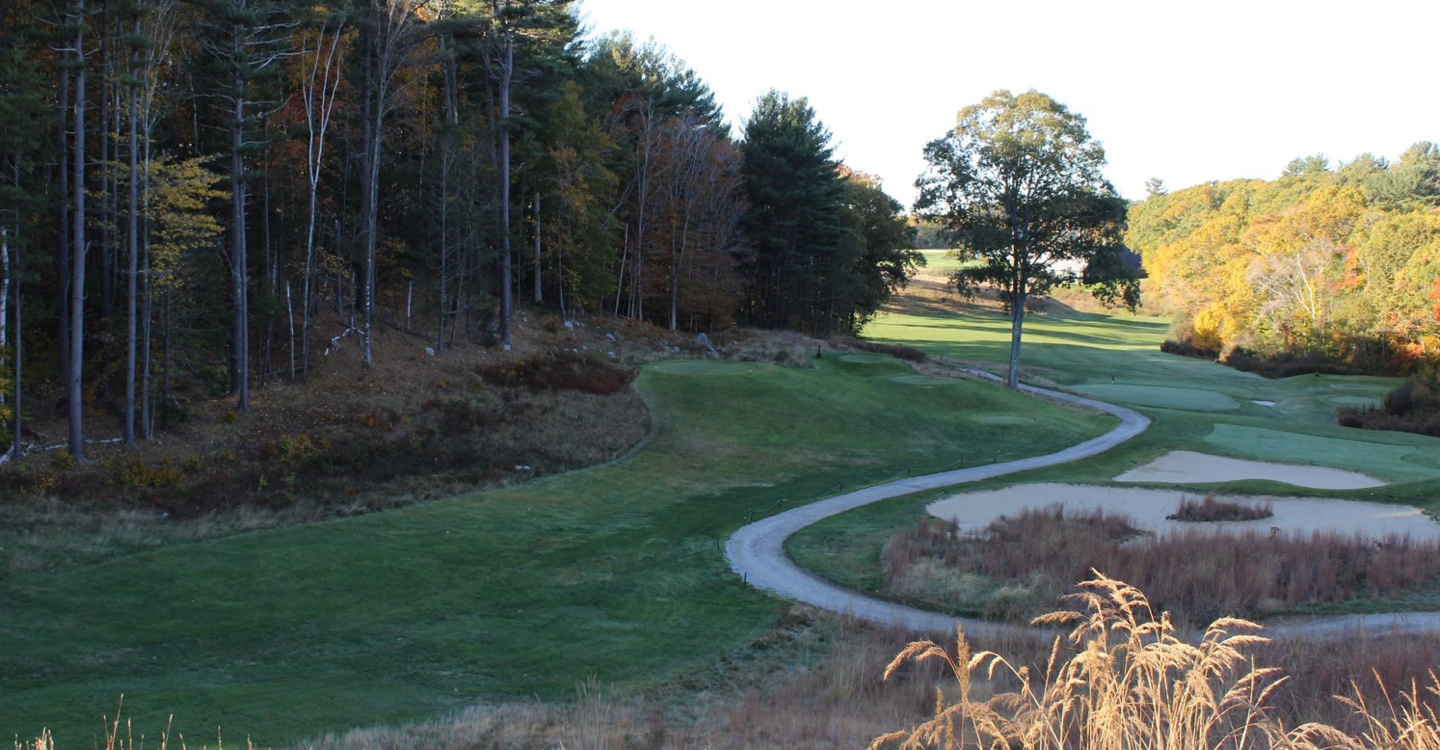
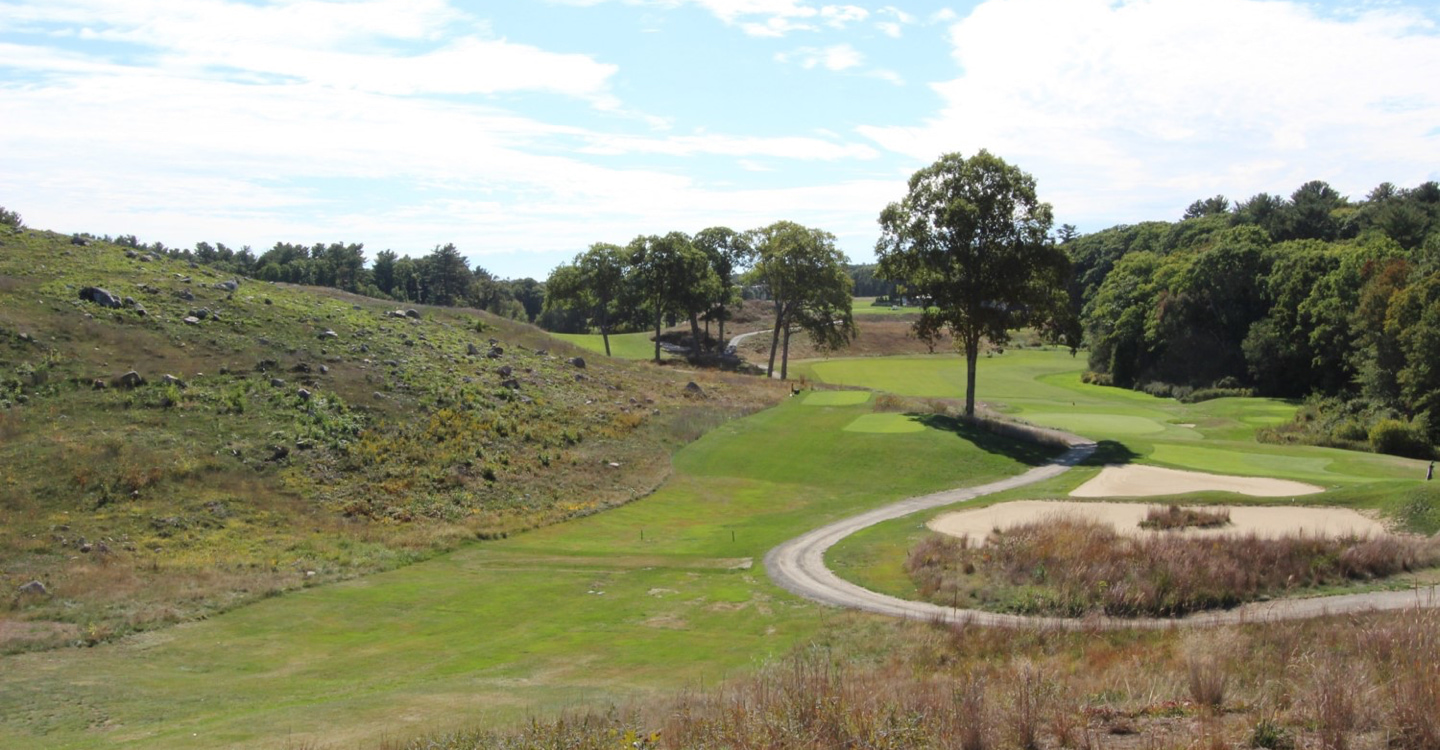
On the 15th tee in 2013 and after tree removal in 2017
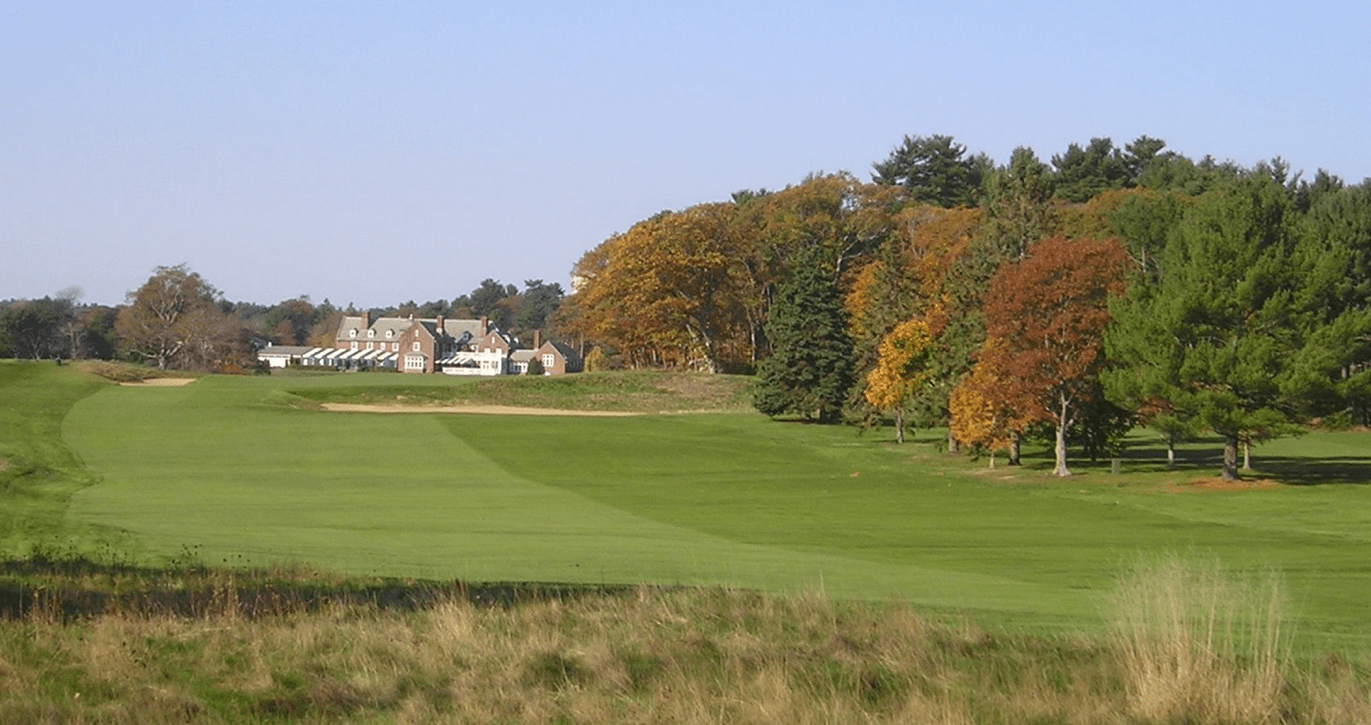
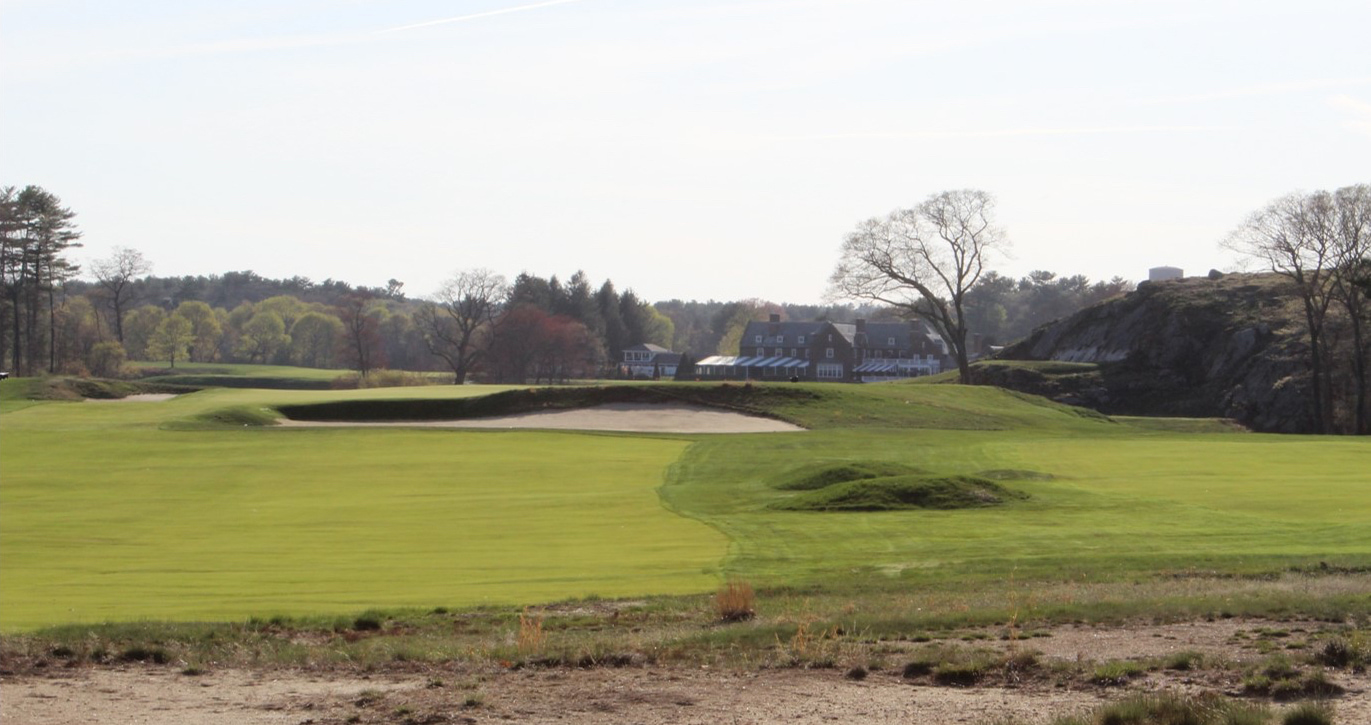
From the 17th tee in 2006 and after several phases of tree work in 2017
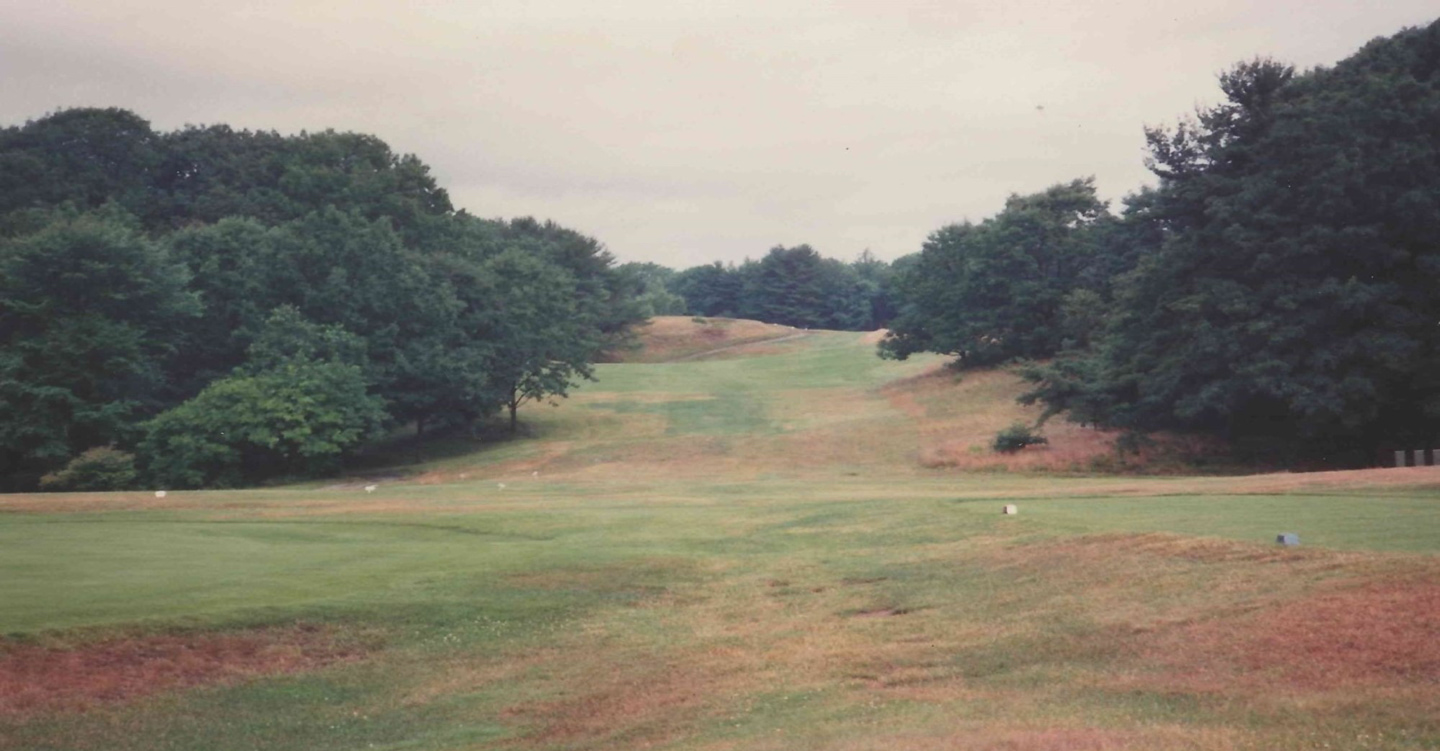

Down the 18th in 2008 and after tree removal in 2017
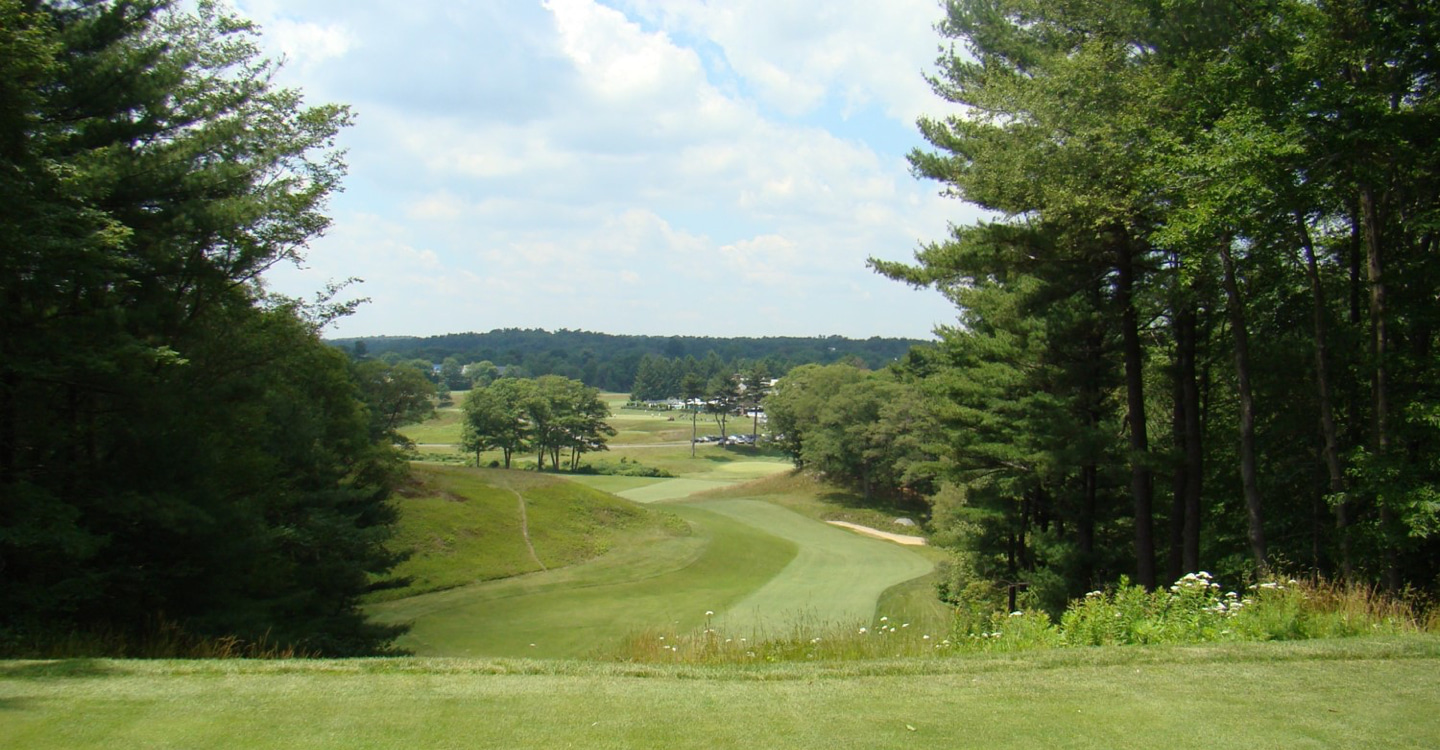
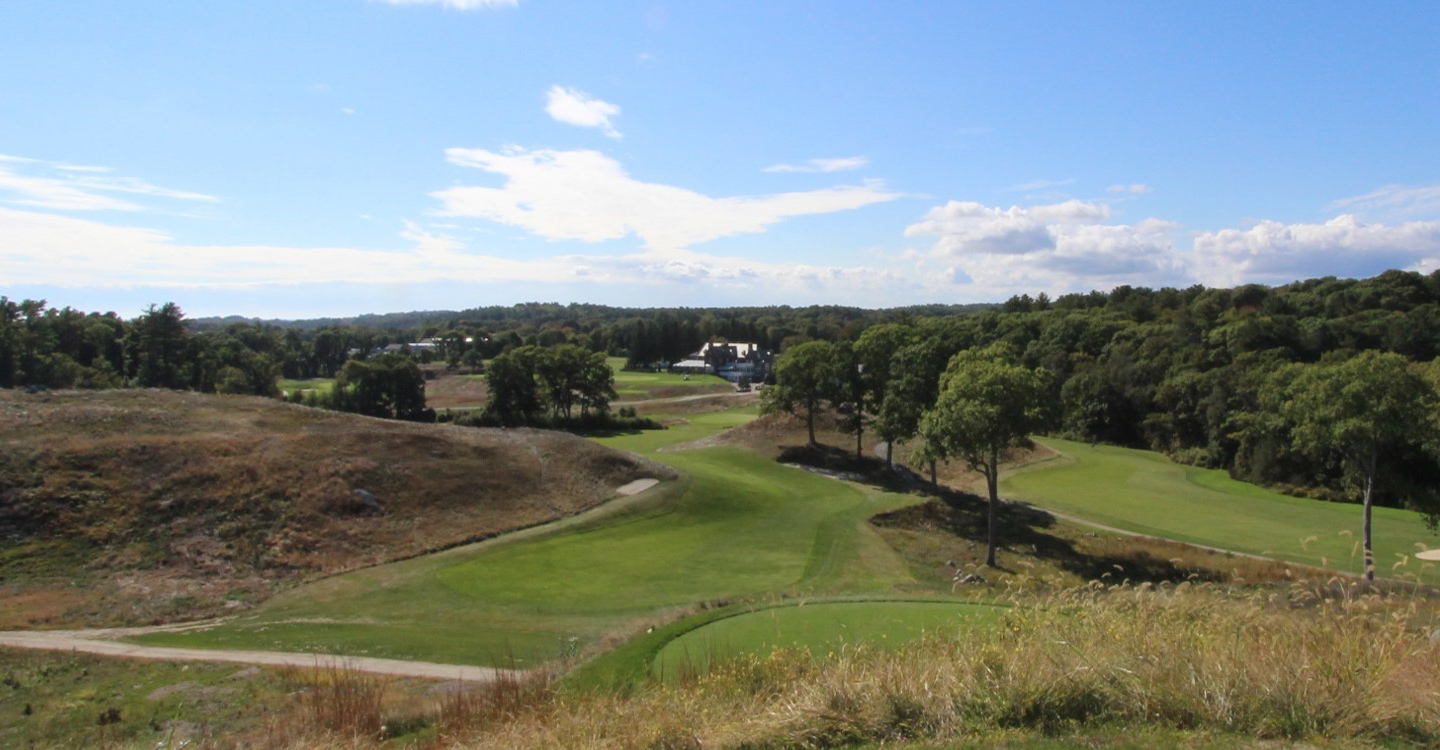
The details also get attention from the Essex crew, who work hard to present firm and fast conditions that accentuate the course’s features. Fescue areas are typically just playable enough for players to have a chance at heroic recoveries. From the welcome that visitors get by Head Pro Jack Davis and his staff all the way through a loop around this lovingly restored Donald Ross gem, Essex County Club hits every note perfectly.
The course
There are two types of land that make for great golf courses. The first type could be called “generally great” land—the linksland of the British Isles, or the sand hills of Nebraska and North Carolina—might not have particular features that stand out, but that is of no consequence. Nature seems to have custom-made certain places for golf. The second type has a unique feature or features that when placed in the hands of a skilled architect, yields a great course. Raynor’s use of the ravine at Shoreacres is a prime example. With its creeks and central stone hill, the terrain of Essex County falls into the latter category of greatness.
Ross’s original routing of Essex was a continuous loop of the classic links variety. The hole order was later changed to create two nines that returned to the clubhouse. Players are taken on a journey through several distinct zones: the field, the wetlands and the hill.
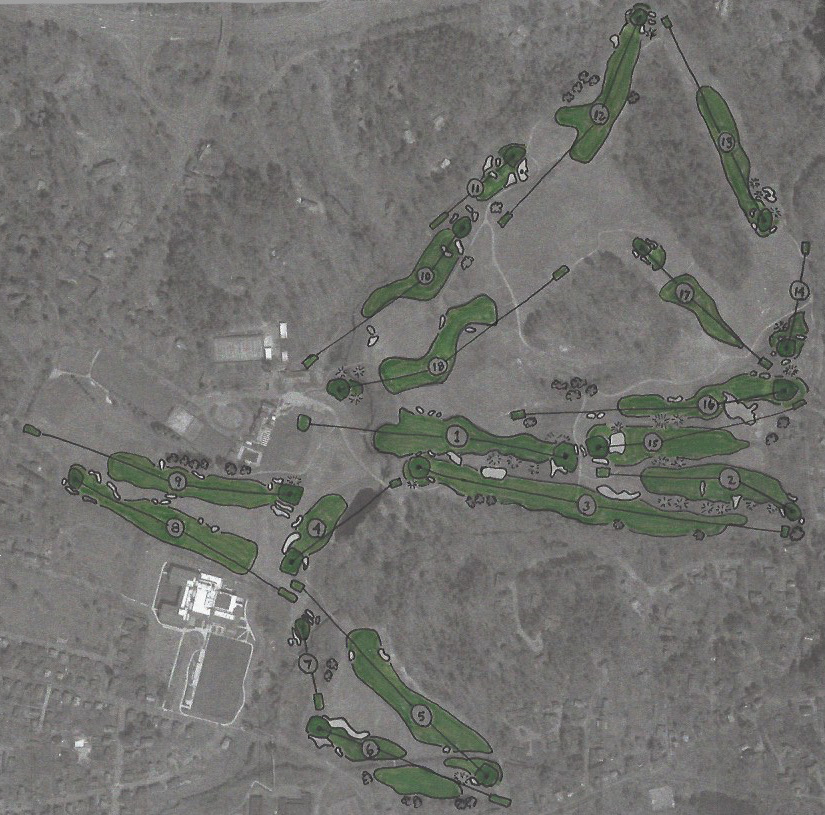
The course begins with its first three holes in a wide open and relatively flat field in the center of the property below the back of the clubhouse. Of particular note is the par-5 3rd, for several reasons. First, the hole measured more than 600 yards on the day that the course opened. Ross was not afraid to make players take on the a brutish three-shotter. Second, the 3rd green includes a pronounced depression that is referred to as the “bathtub,” which resulted most likely from a buried tree stump decaying over decades. And finally, that same green is the only remaining feature of the original pre-Ross course and is, according to the club, the oldest continuously used green in America.
-
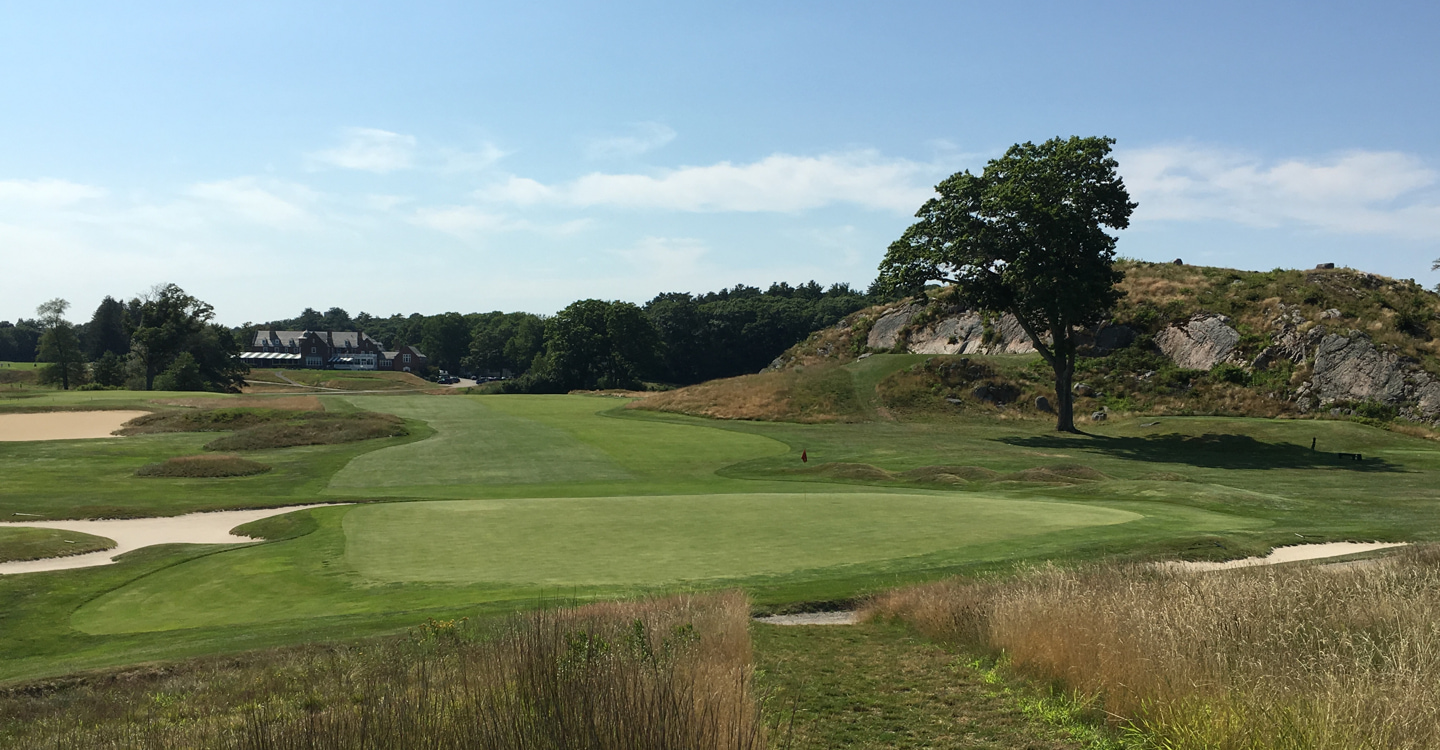
The view back across the field to the clubhouse from the green of the par-4 1st
-
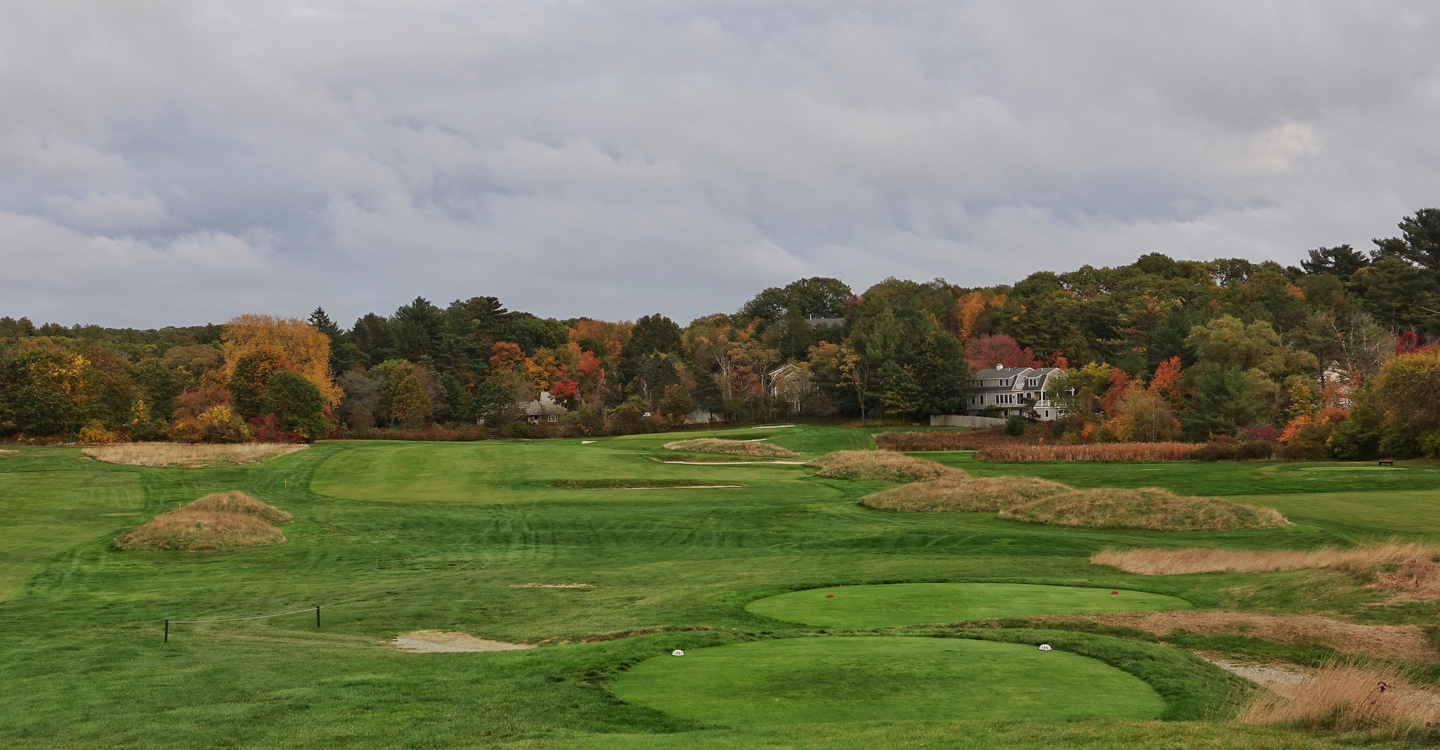
The dogleg right par-4 2nd plays slightly uphill to a heavily sloped green - Photo Credit: Jon Cavalier
-
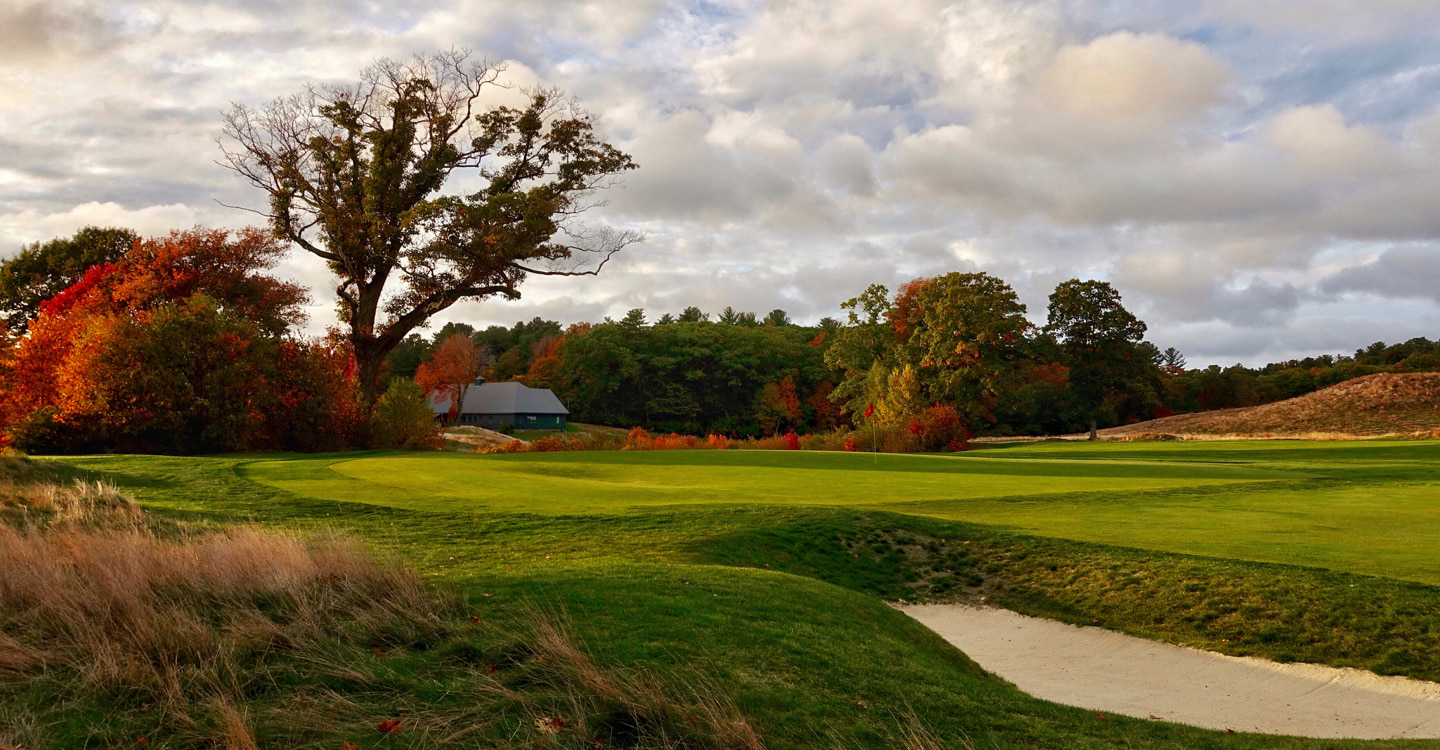
The green on the long par-5 3rd, with its bathtub depression left - Photo Credit: Jon Cavalier
Holes 4 through 9 move into a section with more interesting topography and two meandering brooks, Sawmill and Causeway. These waterways come into play on four of the six holes, and Ross used them brilliantly to create strategic questions for the player to answer. The par-4 8th features a blind drive to a split-level fairway—the kind of combination that would result in a modern architect facing accusations of malpractice.
-
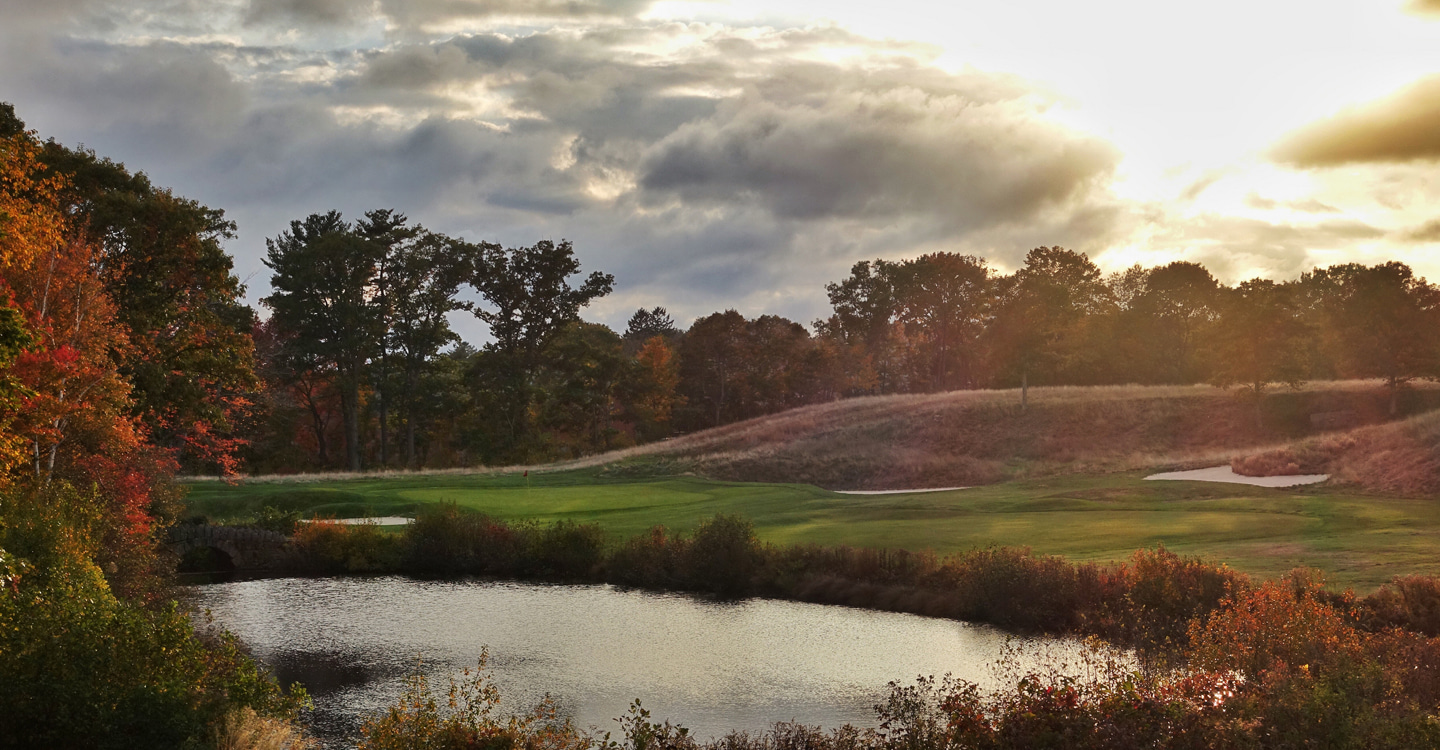
The tee shot on the tough par-3 4th plays over water to a green set at an angle - Photo Credit: Jon Cavalier
-
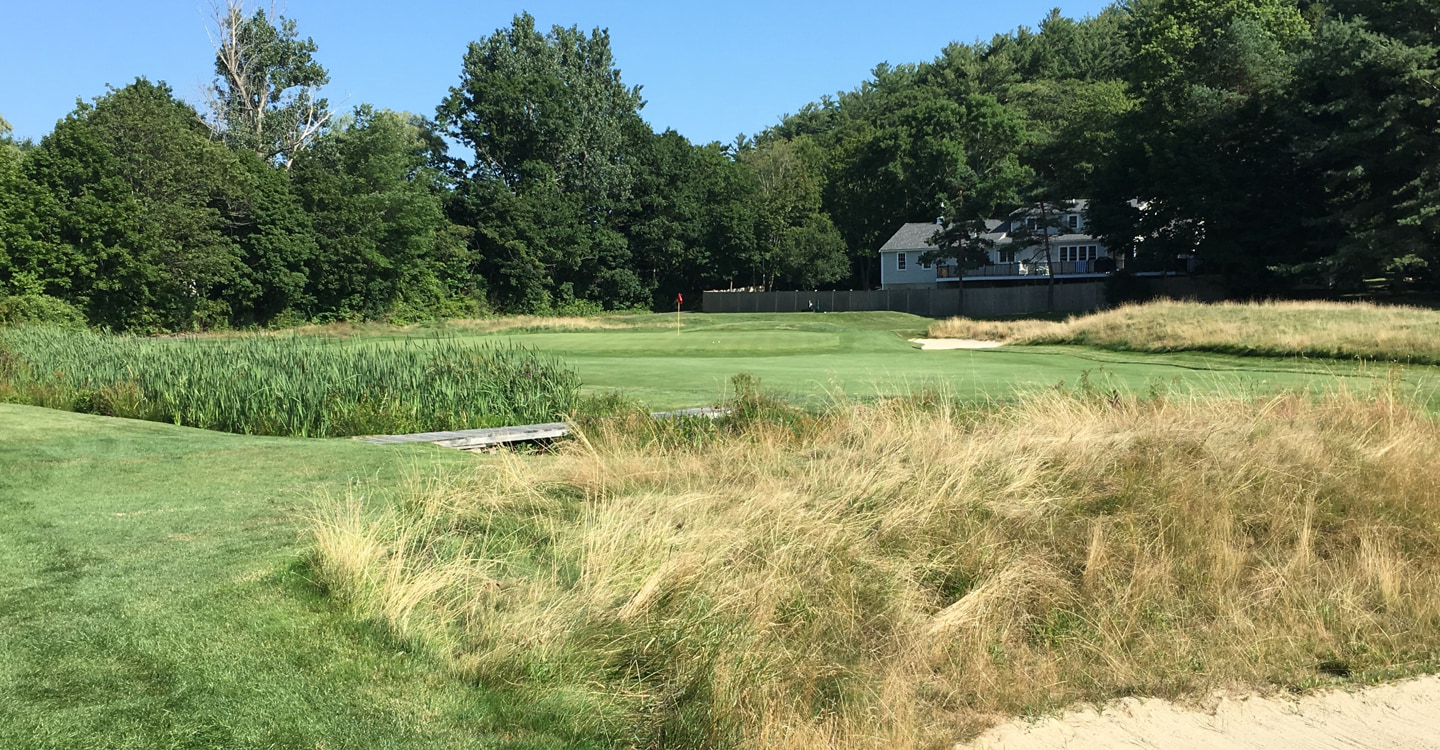
The brook on the par-5 5th forces players to make a risk-reward choice on their second
-
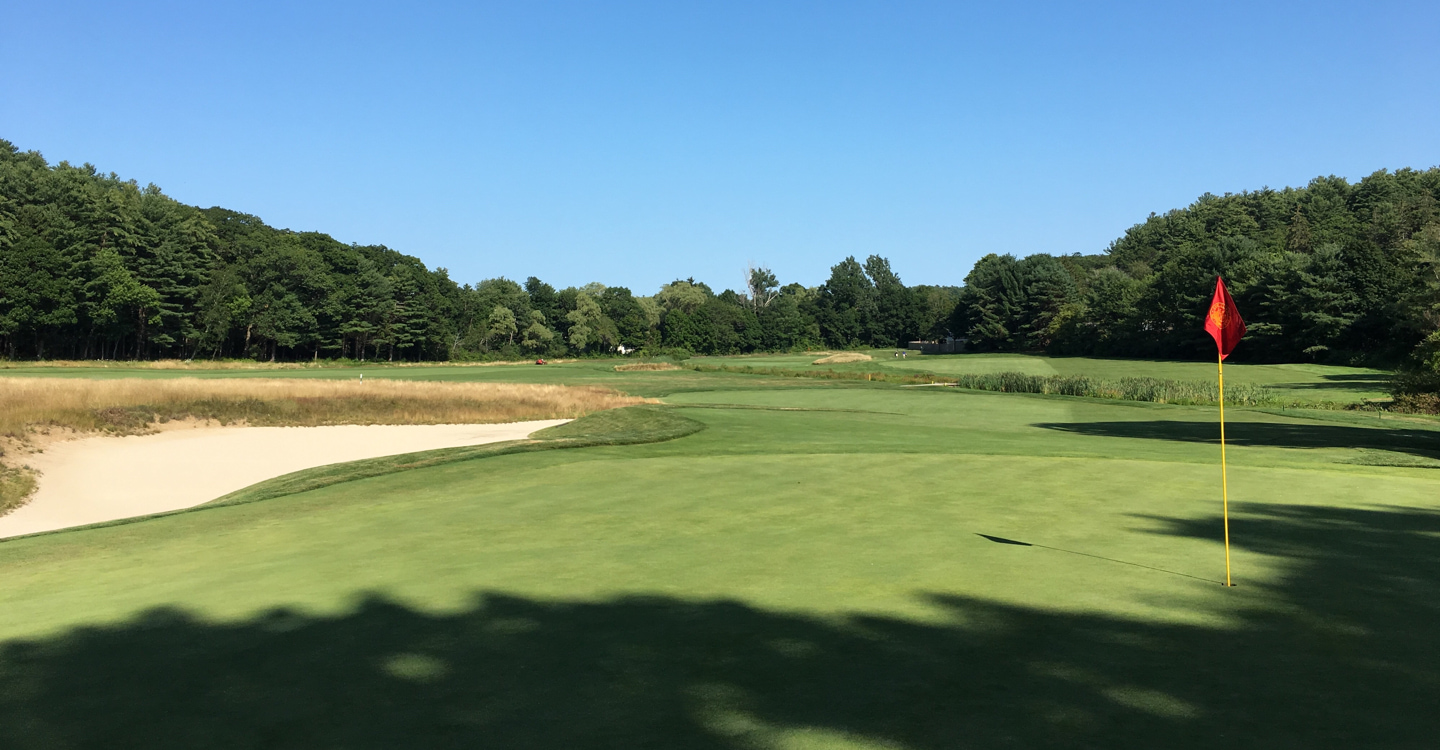
The par-4 6th plays back over the brook to an elevated green
-
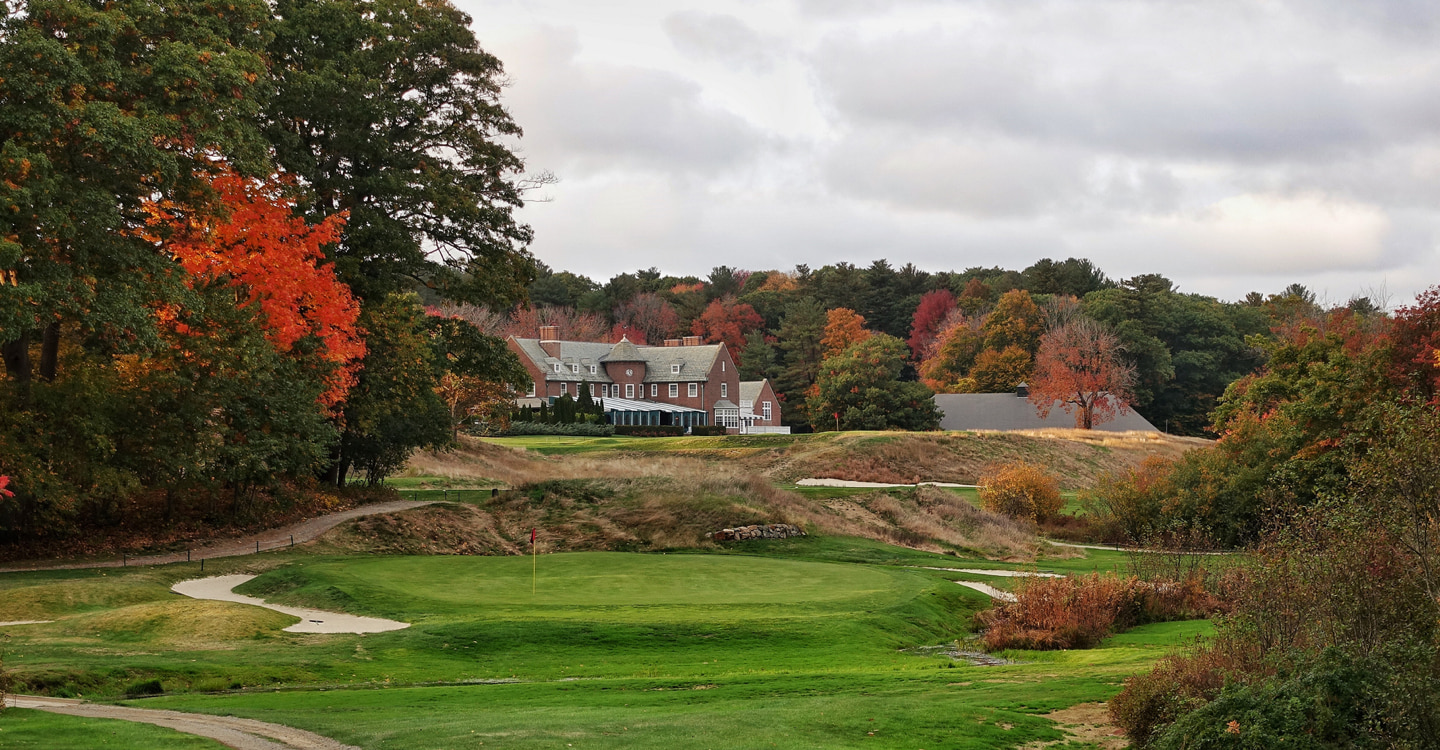
The picturesque 7th requires a precise short iron to a canted green - Photo Credit: Jon Cavalier
-
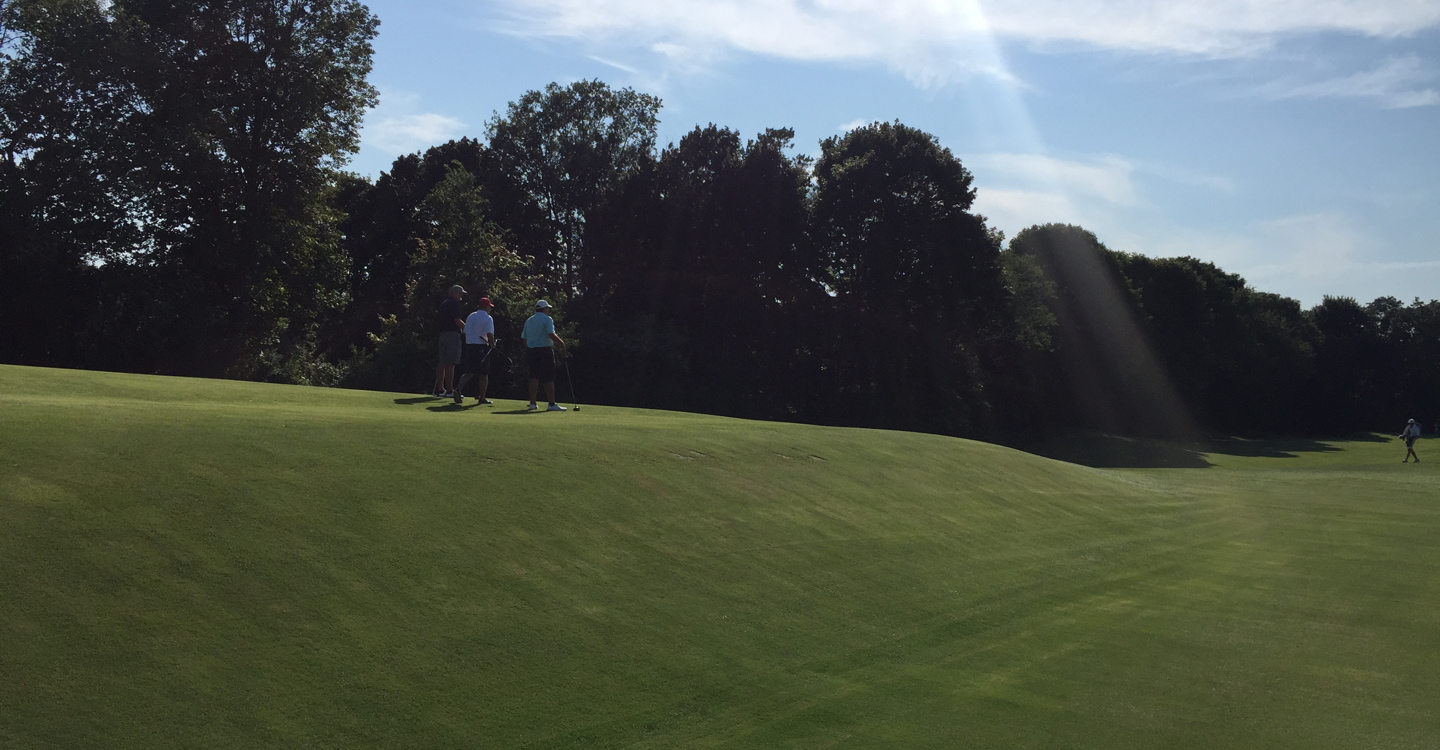
The tiered fairway on the par-4 8th has to be seen to be believed - Photo Credit: Jonn Coffey
-
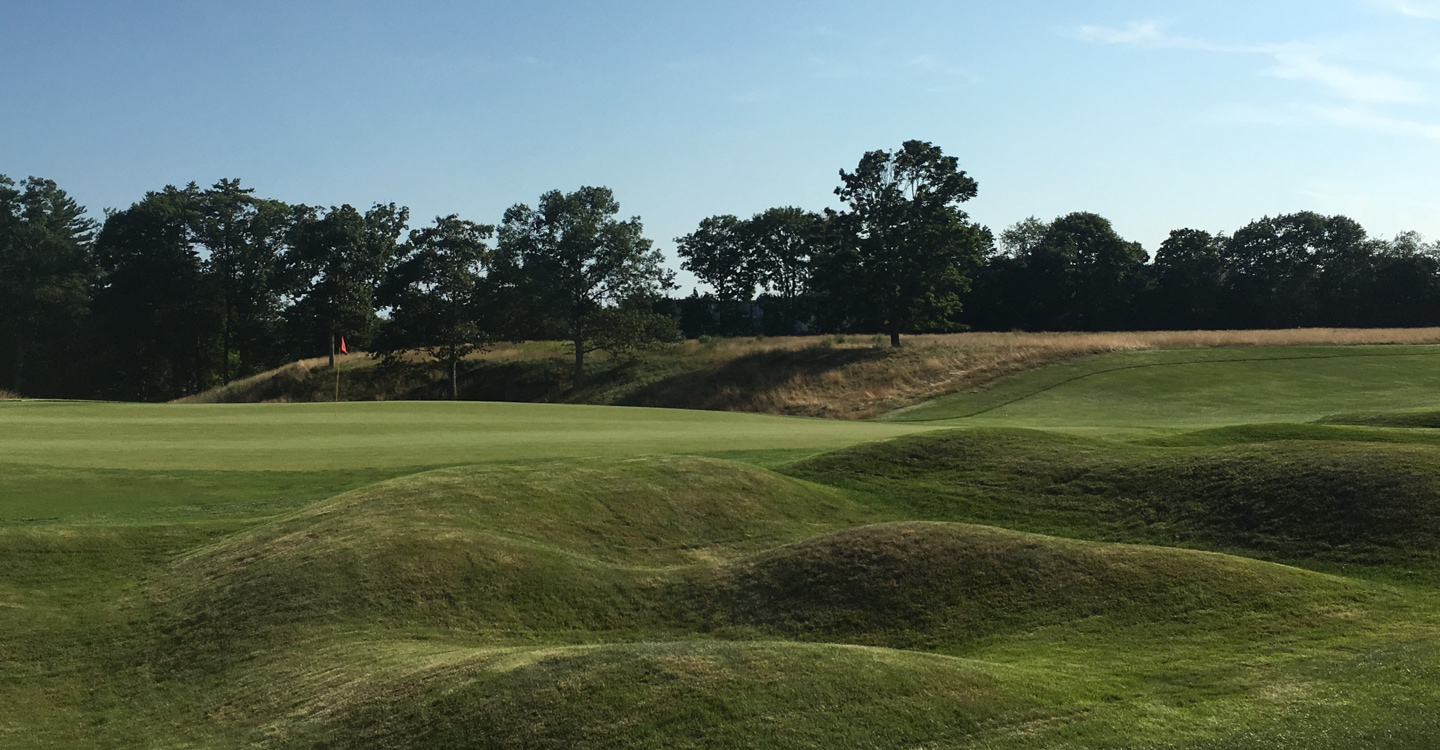
Ross's mounds guard the green at the par-4 9th, along with terraced bunkering
The 10th through 14th play around the base of the hill, where Ross uses the slopes to create a wide variety of challenges, including several shots with partially or completely obstructed views. Ross’s stacking of the 10th and 11th greens is breathtaking, and the 11th is among the boldest par-3s that he ever built.
-
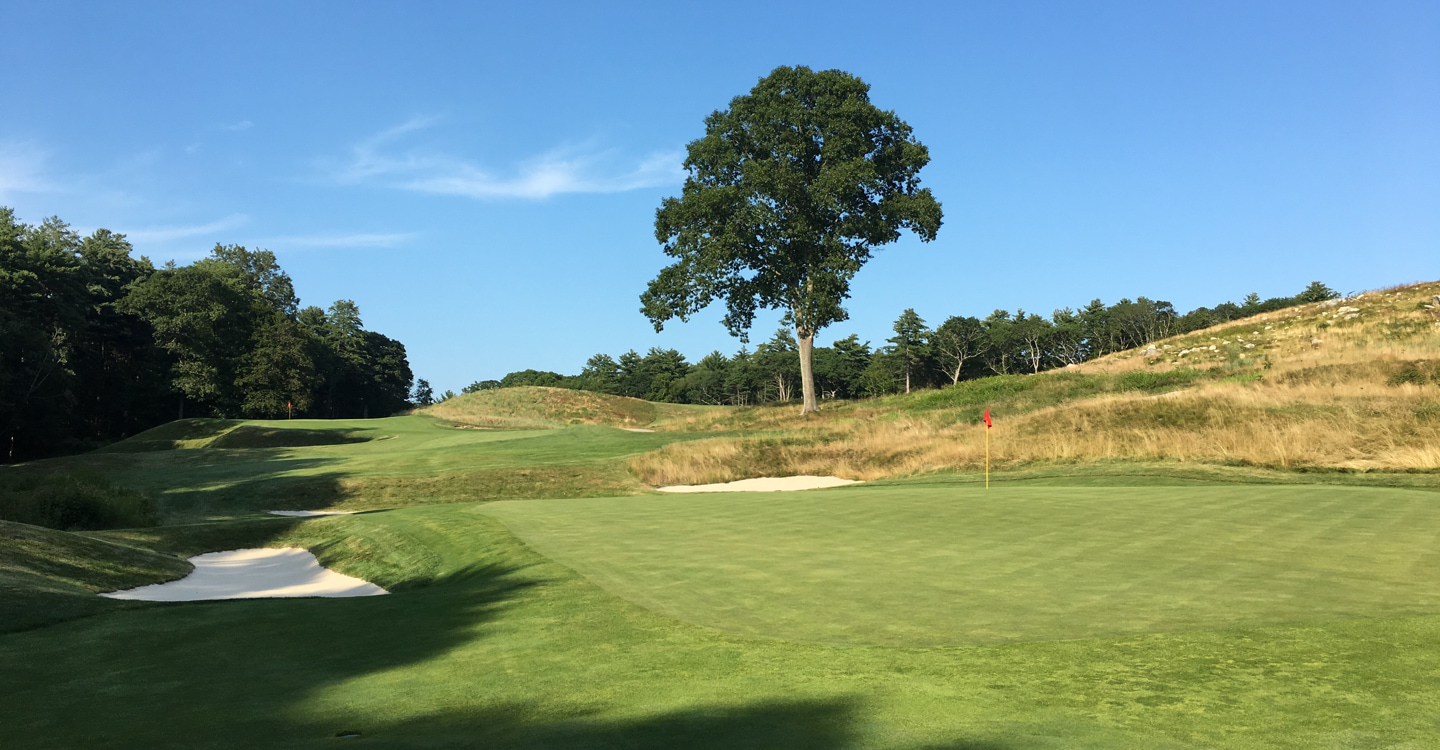
The entirety of the par-4 10th works off the hillside to the right, including the sloped green
-
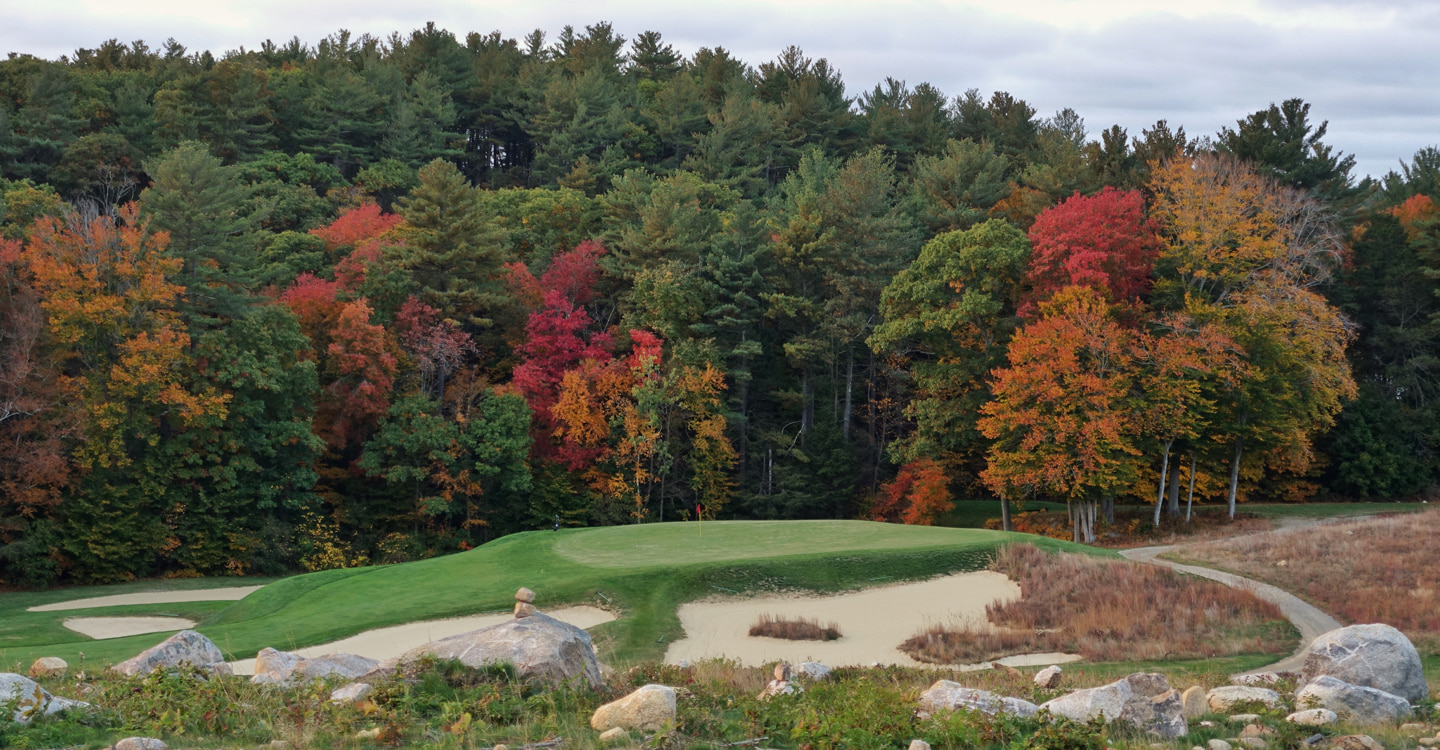
The green at the par-3 11th is benched high into the hillside with trouble all around - Photo Credit: Jon Cavalier
-

After a blind drive, the par-4 12th runs downhill to a green at grade - Photo Credit: Jon Cavalier
-
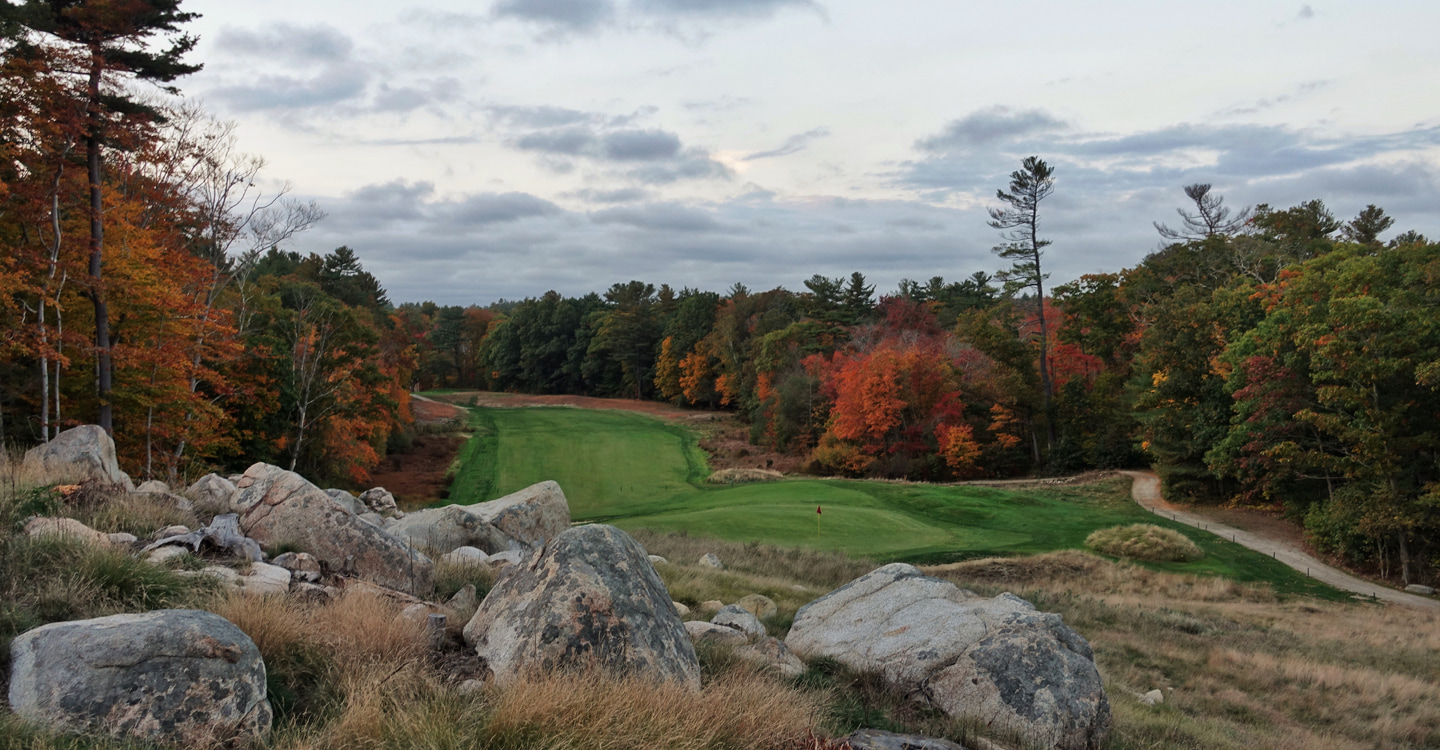
The par-4 13th is a gorgeous hole with a tough green set serenely on the backside of the hill - Photo Credit: Jon Cavalier
-
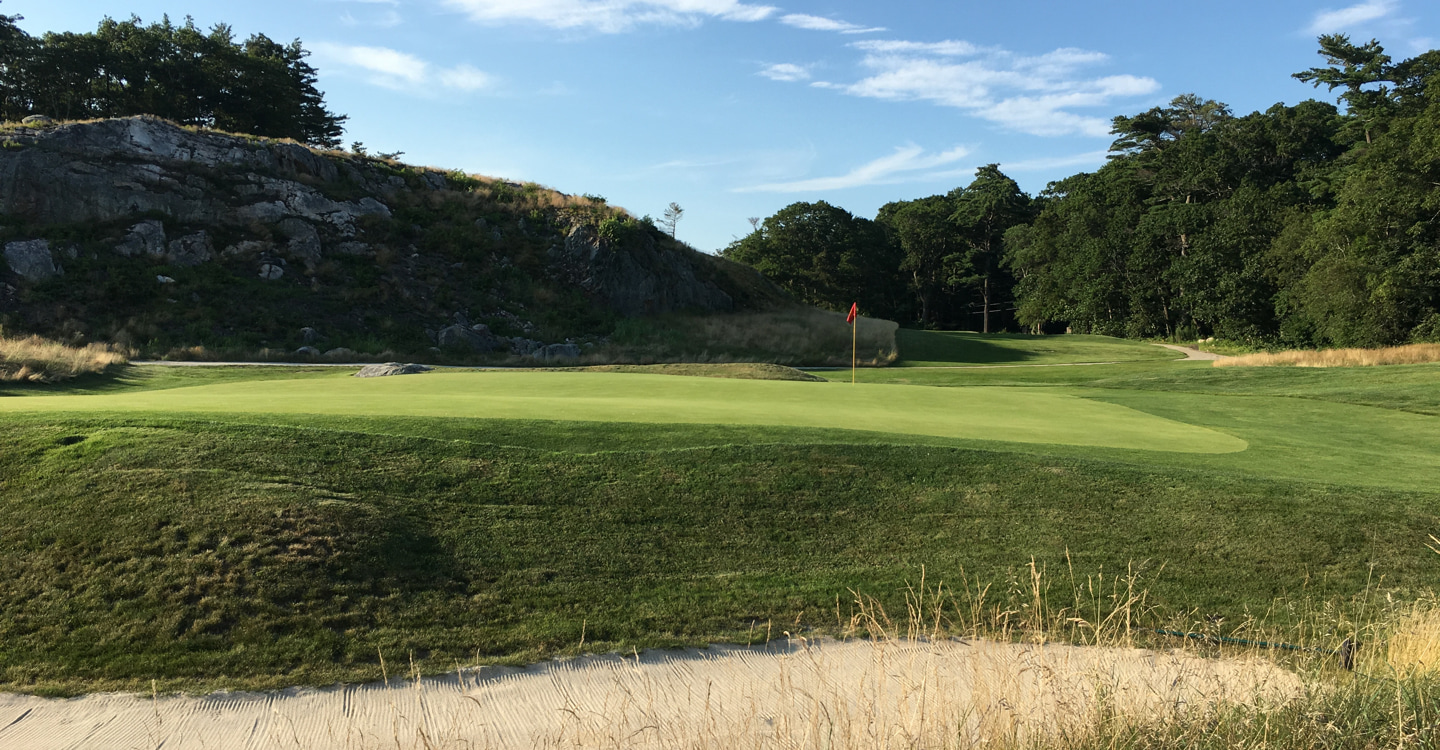
The youngest of Essex's greens, the par-3 14th falls away on both sides
The course returns to the field with the stout 15th and 16th which provide a pause before the dramatic crescendo of the final two holes. The previously mentioned addition of the elevated back tee on the 16th was a stroke of genius by Richardson, made possible by tree clearing.
-

The elevated green on the par-4 15th is well defended by bunkers and internal contours - Photo Credit: Jon Cavalier
-
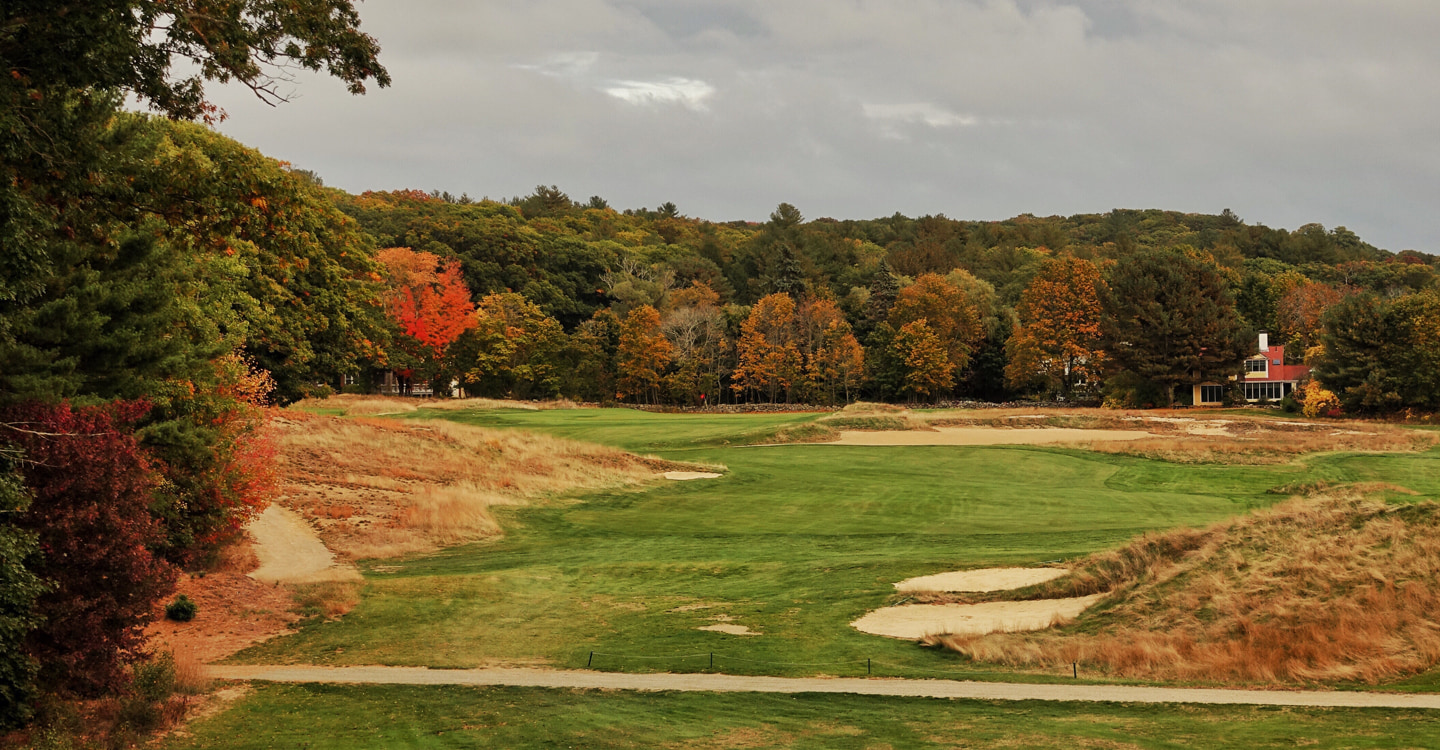
The back tee on the hill has added another dimension to the par-4 16th - Photo Credit: Jon Cavalier
The 17th plays up to the top of the hill and the 18th back down the other side. These are golf holes that require true vision to see, and an equal amount of guts to build. For lovers of variety, it doesn’t get any better than the routing at Essex County.
-
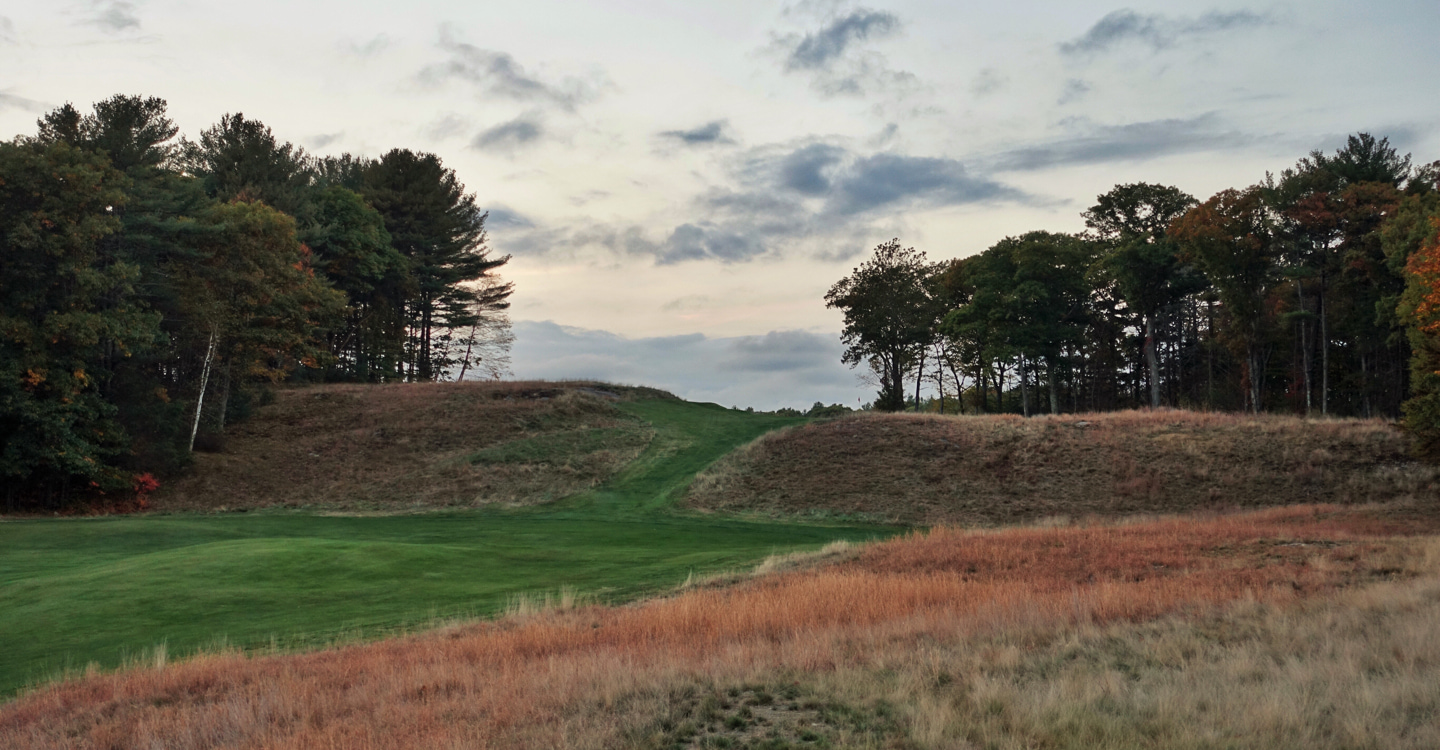
A player can be forgiven for not knowing where to go on the par-4 17th - Photo Credit: Jon Cavalier
-
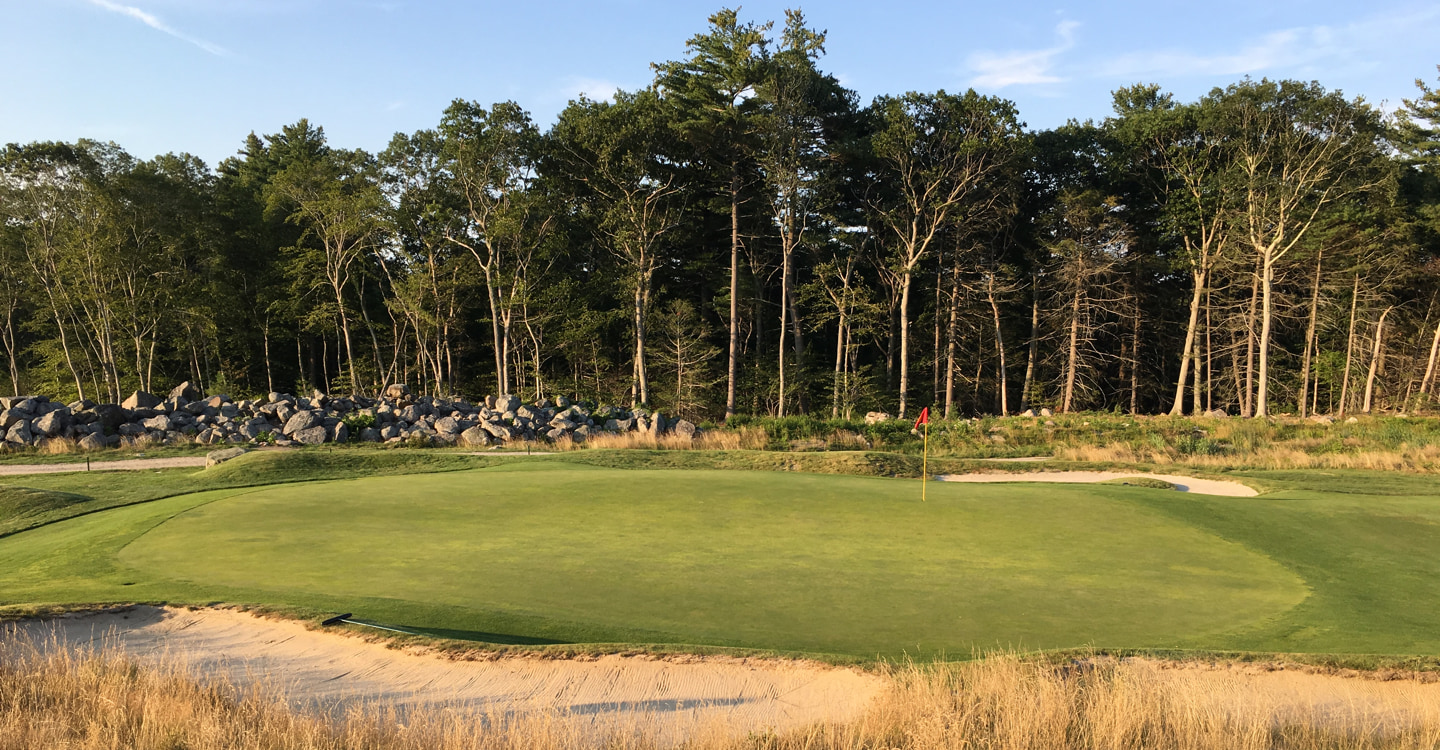
After making it up the hill, the 17th green is found nestled among bunkers and stone
-
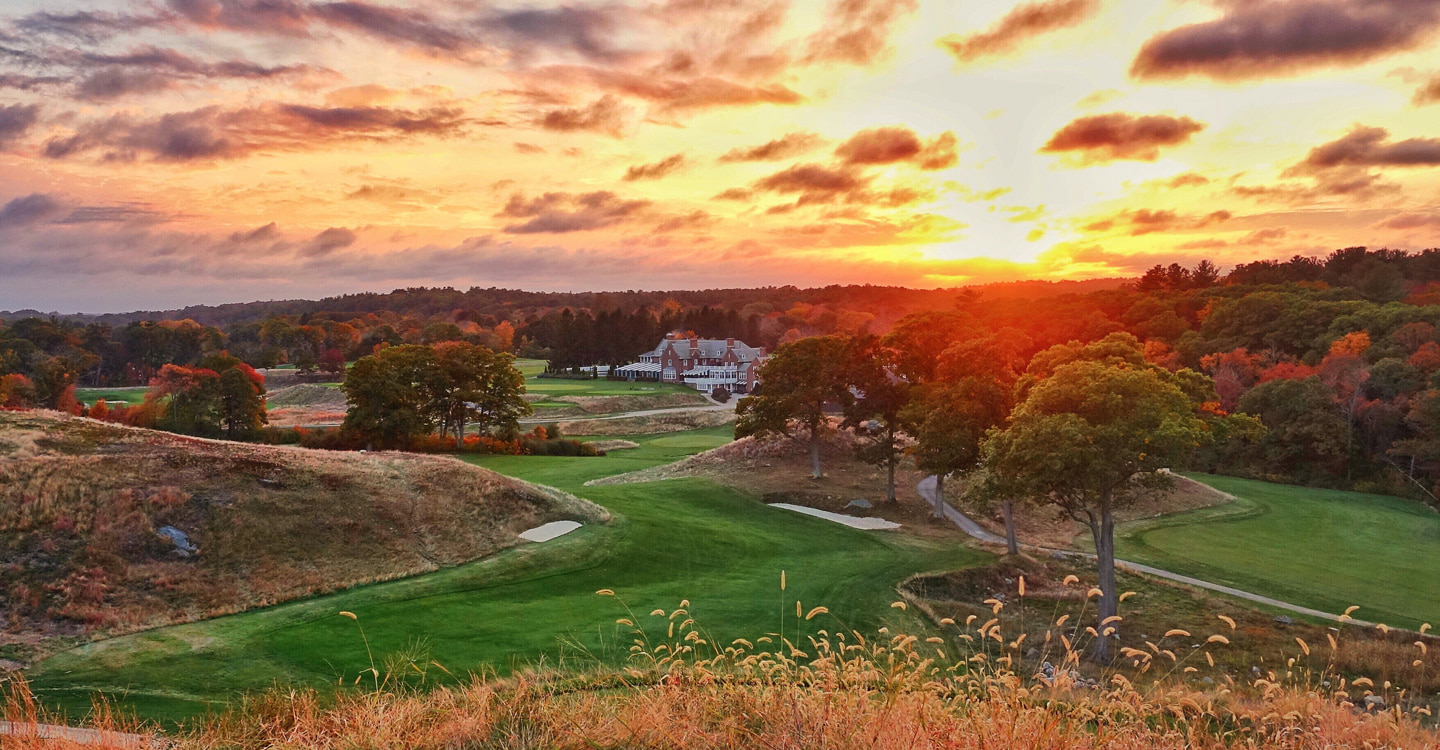
The tee shot on the par-4 18th is one of the most pulse-quickening in America - Photo Credit: Jon Cavalier
-
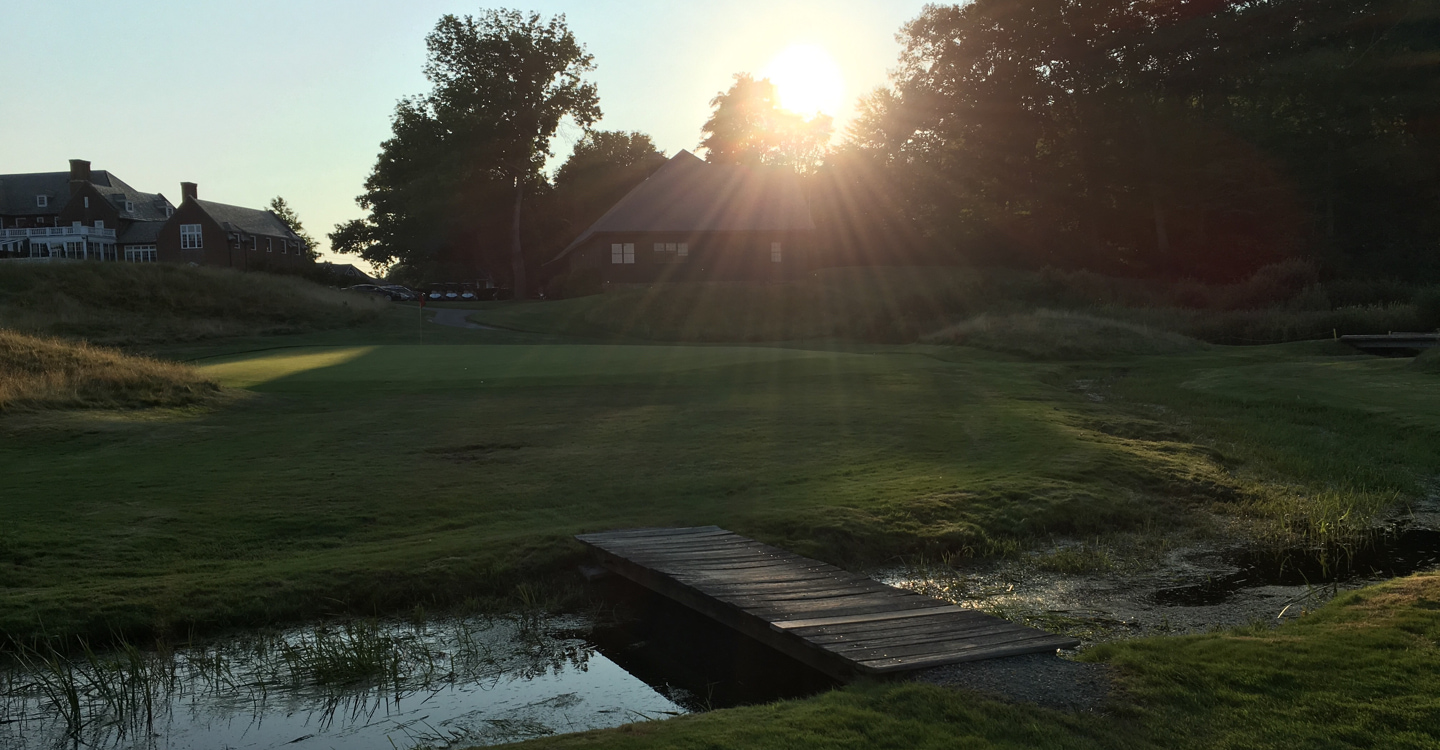
One last brook crossing before reaching the home green
-
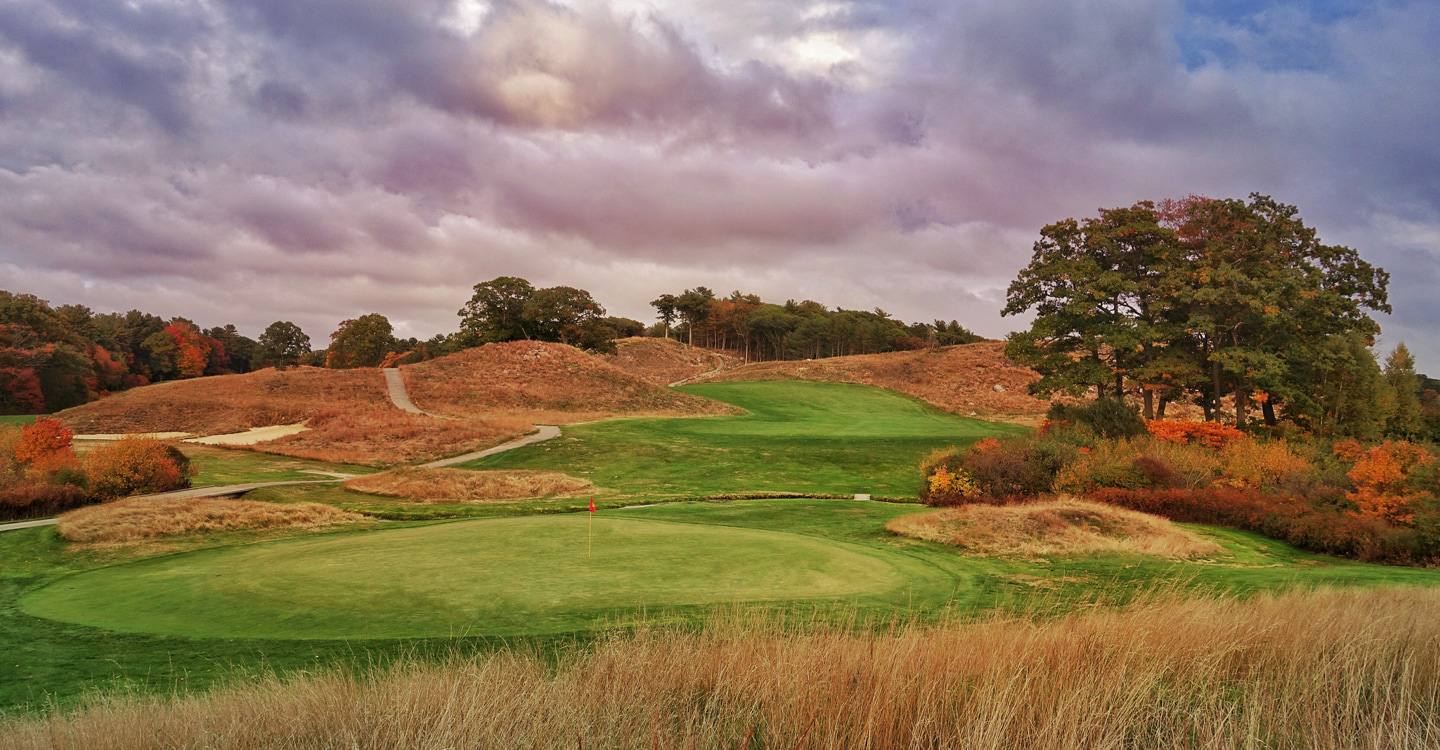
A final look back at Donald Ross's Massachussets masterpiece - Photo Credit: Jon Cavalier
The photos above hint at the variety that is also a theme of the hazards from tee to green. Mounds, sandy waste areas, dense native areas, stretches of playable fine fescue, rocks, the brooks and rugged Ross bunkering add up to a visual feast of texture and color. Once on the greens, players face a combination of cant and subtle contour that is sometimes lost in modern design. At Essex County, players need to be able to golf their ball intelligently, and read and roll their putts well too.
Whether it was the broad strokes or the fine details, Donald Ross poured himself into the course at Essex County Club. In hindsight, it is now plain to see that the concurrent work that Ross was doing at Essex and Pinehurst combined to take his design powers to the next level.
The staff and membership carry on Ross’s ethos today in their care and enjoyment of his creation. No wonder that those fortunate enough to walk the fairways at Essex have their hearts captured in a way that only a home (course) can.
Sign Up for The Fried Egg Newsletter
The Fried Egg Newsletter is the best way to stay up to date on all things golf. Delivered every Monday, Wednesday, and Friday for free!


 by
by 
